First, what do we mean by ‘vampire’?
DEFINITION OF VAMPIREmirr
Most commonly we mean a corpse brought back to life by a demon or by the original spirit. This spirit is unable to rest in death. These vampires are embodiments of social chaos and contagion. They are supernatural inventions to offer communities the comforting illusion that the cause of any societal problems can be eradicated. This is far more comforting than the idea that a society of humans is powerless in the face of some challenges.
Sometimes ‘vampire’ refers to a spirit or ghost who did not need a body in its hunt for blood. These kinds of vampires occur most often where communities worship and fear the spirits of dead ancestors.
Some countries have a very long history of vampire belief e.g. Greece and Bulgaria. Greece had its own vampire craze which occurred between the 17th and 19th centuries.
Vampire stories are mostly conservative in their morality. In a classic (or typical) vampire story, once the vampire is slain, or driven away somehow, order is re-established and the community triumphs.
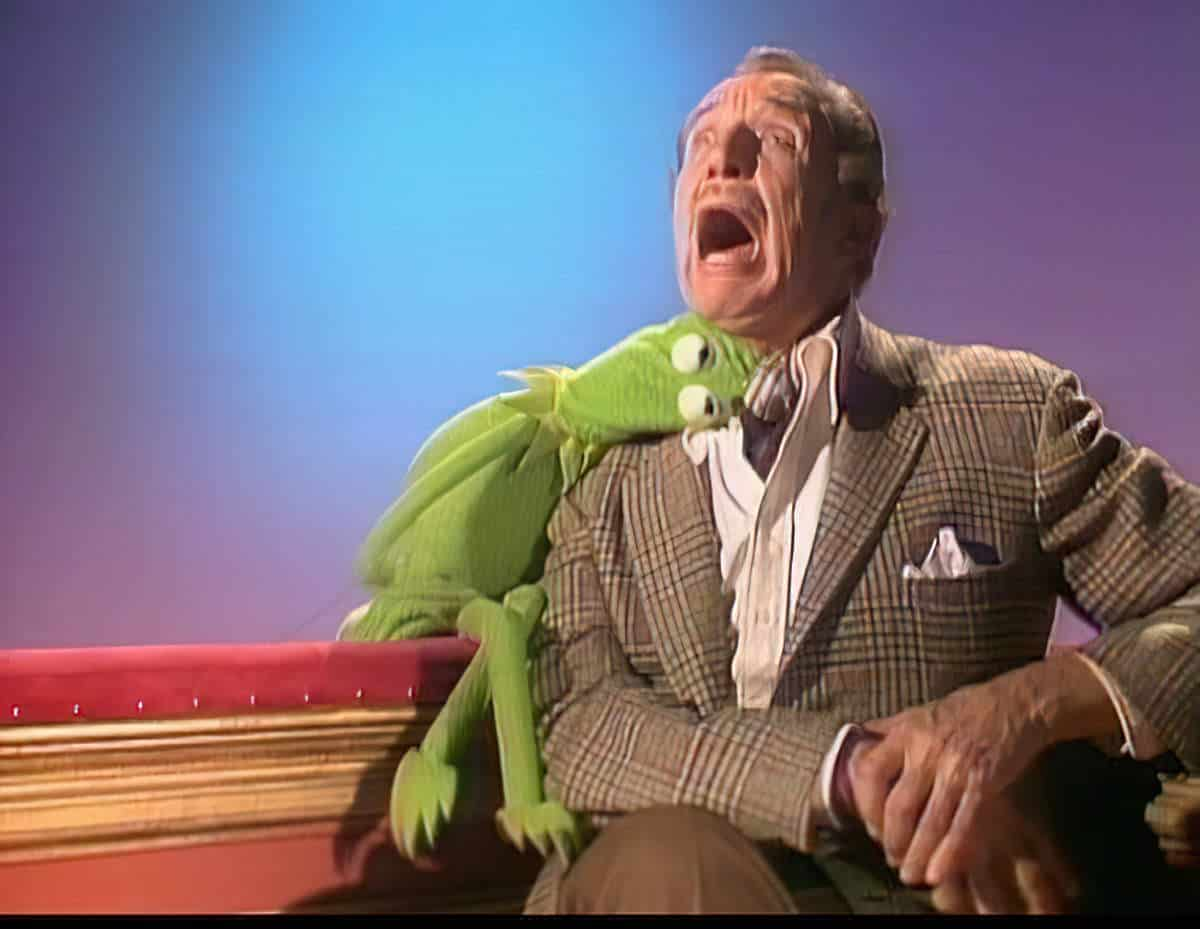
ARE YOU A CANDIDATE FOR BECOMING A VAMPIRE?
People who suffered a traumatic death (e.g. suicide or drowning), people who led an immoral life, people with visible disabilities, people who were unbaptised at time of death, people who had a curse put on them, were-wolves, the ex-communicated, designated witches, and people thought to have been killed by vampires. People with red hair were also at risk. Anything at all which made you stand out from the crowd made you susceptible to people thinking you’d turn into a vampire.

THE CONNECTION BETWEEN WITCHES AND VAMPIRES
There is quite some overlap between witches and vampires, and again between vampires and cannibals. Some beliefs around witches tell us that witches and sorcerers were thought to send out their souls to steal blood and do evil. They could do this without even dying first. Their bodies would fall into a deep trance. They would not recover until their souls returned.
40 days
Some vampires only live for 40 days. Others are immortal.

Abjection
The vampire is the quintessential queer outsider: it exists outside society, challenging and outraging social mores. It is an abject being that “[d]oes not respect borders, positions, rules and disturbs identity, system, order” (Kristeva 1982, 4). It outrages the social order. Yet “normal” society is entranced, fascinated, obsessed. It wants to possess, but also to destroy.
This abjectness, this lack of respect for rules and borders, has traditionally been viewed negatively. Female vampires in particular have been viewed as “[a]n expression of women’s position as outsiders, women’s social and cultural alienation” (Jackson 1981, 71).
This misses an important point. I propose that the female vampire is an outsider through choice. She has not been thrown out of society: she defies it.
Feral Feminisms, Performing Queer Femininity, Rosie Garland
This abjection of the vampire can be seen even in children’s picture books, in which vampires can be used (along with many other archetypes) to signal Otherness, feeling different from everyone else.

Everyone says Peter is the baddest boy in school. He likes strange food, wears strange clothes and does strange things. In fact, Peter is a vampire. So when the class gerbil goes missing, Lucy lets Peter take the blame, even though she knows it wasn’t anything to do with him…
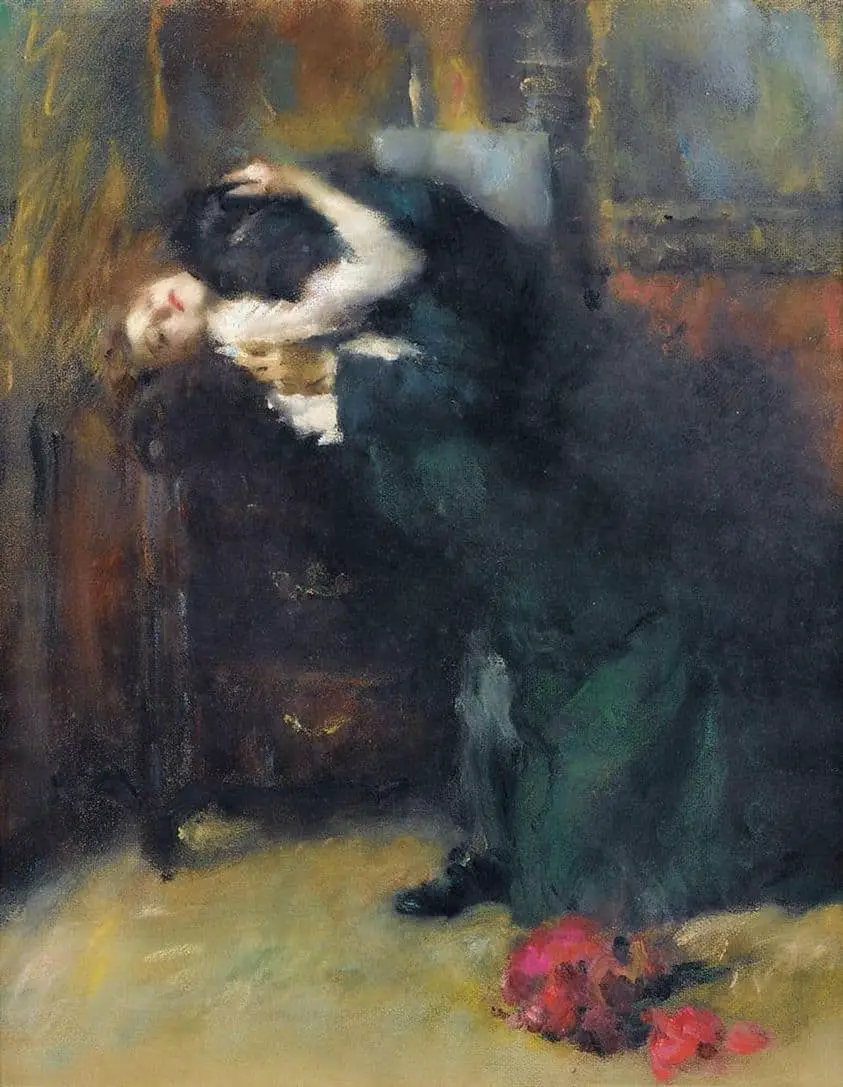
because the way vampires prey is inherently erotic and performed in the same way regardless of gender — the fangs used for penetration, the exchange of bodily fluids, the seductive nature of how they lure their victims — the vampire figure also became a conduit for film and TV-makers to explore a more fluid sense of sexuality. Indeed, prominent gay screenwriter and True Blood creator Alan Ball believed most vampires to be canonically queer. “In the books, most of the vampires do seem to be pansexual,” Ball said in a 2008 interview. “Their thirst for blood really sort of makes them willing partners for any sort of sexual thing, and for them feeding and sexuality is combined.”
Why Are We Still So Obsessed With Lesbian Vampires? by Michelle Hyun Kim
the way vampires prey is inherently erotic and performed in the same way regardless of gender — the fangs used for penetration, the exchange of bodily fluids, the seductive nature of how they lure their victims — the vampire figure also became a conduit for film and TV-makers to explore a more fluid sense of sexuality. Indeed, prominent gay screenwriter and True Blood creator Alan Ball believed most vampires to be canonically queer.
Why Are We Still So Obsessed With Lesbian Vampires? by Michelle Hyun Kim at Them


American Horror Story
American Horror Story is an anthology TV series, meaning each season is a complete narrative in its own right. (The TV equivalent of a short story collection.)
Because this TV show is supernatural horror, of course vampires make an appearance. Notably, the 2015 series: Hotel (Season 5).

This narrative makes use of the vampire to interrogate ideas around celebrity, and stars an actual celebrity, Lady Gaga, a former Hollywood starlet and 1970s disco queen. She lives at Hotel Cortez in Los Angeles, is 112 years old and is eternally young due to a mysterious blood virus. She has many former lovers who haunt the corridors of the Hotel Cortez.
American Horror Story wasn’t the first to make use of vampires to interrogate celebrity. John Polidori did it in The Vampyre.
Why are vampires so good for conveying ideas about consumerism? Well, they are ‘consumptive’ in a very literal (disgusting) sense. They also tend to be very wealthy (because they are of the aristocratic class), so they can buy a lot of things. They have status and a certain kind of sexuality which we associate most often with celebrities.


When encountering modern stories about vampires, it’s interesting to see how writers Gothicise them, and how many are saying something about celebrity and consumerism.
ANTISEMITISM
Sometimes, monsters’ bodies are depicted in ways that reflect racist or sexist stereotypes about “us” versus “them.” Literary theorist Jack Halberstam, for example, has written about how Dracula and other vampires reveal antisemitic symbolism – even on Count Chocula cereal boxes. Such images often draw on antisemitic tropes that have been around for centuries, portraying Jewish people as shadowy, bloodsucking parasites.
Madadh Richey
Aristocracy
Vampires tend to be of the aristocracy, though every now and then you’ll find one from an uncouth/peasant background e.g. the vampire in “The Vampire” by Basil Tozer (1902).
Arm dangling off the bed
Imagery of a person lying seductively in bed with their arm dangling off the side is so common in art I’m surprised there’s not a widely known term to describe it. (Perhaps there is and I don’t know of it?)
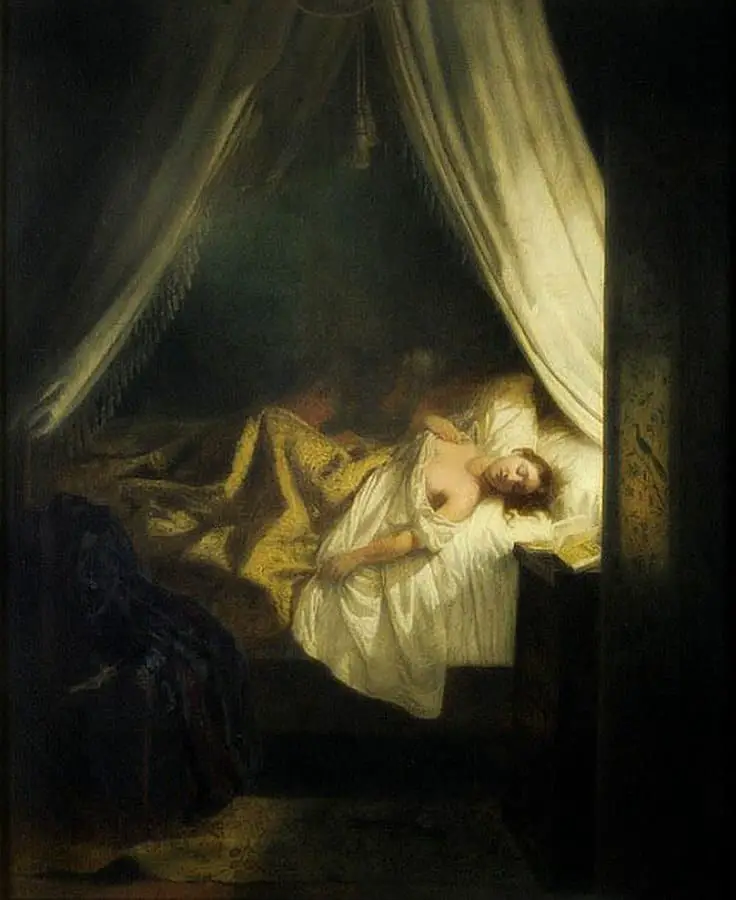
See more examples at my post: In A Dark, Dark Room. This is a Halloween children’s book and pokes fun at the Gothic tradition as well as revelling in it. Naturally, one of the illustrations includes a character with their arm dangling off the side of the bed. In relation to vampire lore, the draining of blood is supposed to drain you of vital energy, so the arm is evidence of that.
Asylum
R. M. Renfield is a fictional character who appears in Bram Stoker’s 1897 Gothic horror novel Dracula. He is an inmate at the lunatic asylum overseen by Dr. John Seward. He suffers from delusions which compel him to eat living creatures in the hope of obtaining their life-force for himself. Dracula sends him insects and he gobbles them up.
Since Dracula is such an influential text, the inclusion of a lunatic asylum is also influential. Vampires hang out in such places.
The [lunatic] asylum, as a heterotopia of deviation, is destined for those who depart from social norms. […] Renfield embodies the physical corruption of the vampire but more importantly the corruption of the mind. The relationship of master/servant emphasizes the feudal order that Dracula embodies and highlights the fears of reverse colonization, as well as the dominion of evil and corruption over the established order. The asylum, as a heterotopia of deviation, is destined for those who depart from social norms. In the novel, it is inside this place where the gathering of the vampire hunters occurs, where the bond between Dracula and Mina’s mind is created, and where insanity becomes the vehicle for knowledge, as Renfield demonstrates that in his lunacy he holds the key to Dracula’s identity.
Daniela Zárate Anastacio
Bats
The vampire is based on a real animal (a bat) which has a couple of fangs and lives on blood. Only trouble is, you can fit it in the palm of your hand. It usually feeds on slow moving grazing animals such as cattle. It’s quite a problem in certain parts of the world, where animals that are stabled are a lot of trouble because they can’t escape it. The bat flies down and nicks the animal with its incredibly sharp teeth, then drinks the blood that oozes out. But if there are a lot of them they weaken the host.
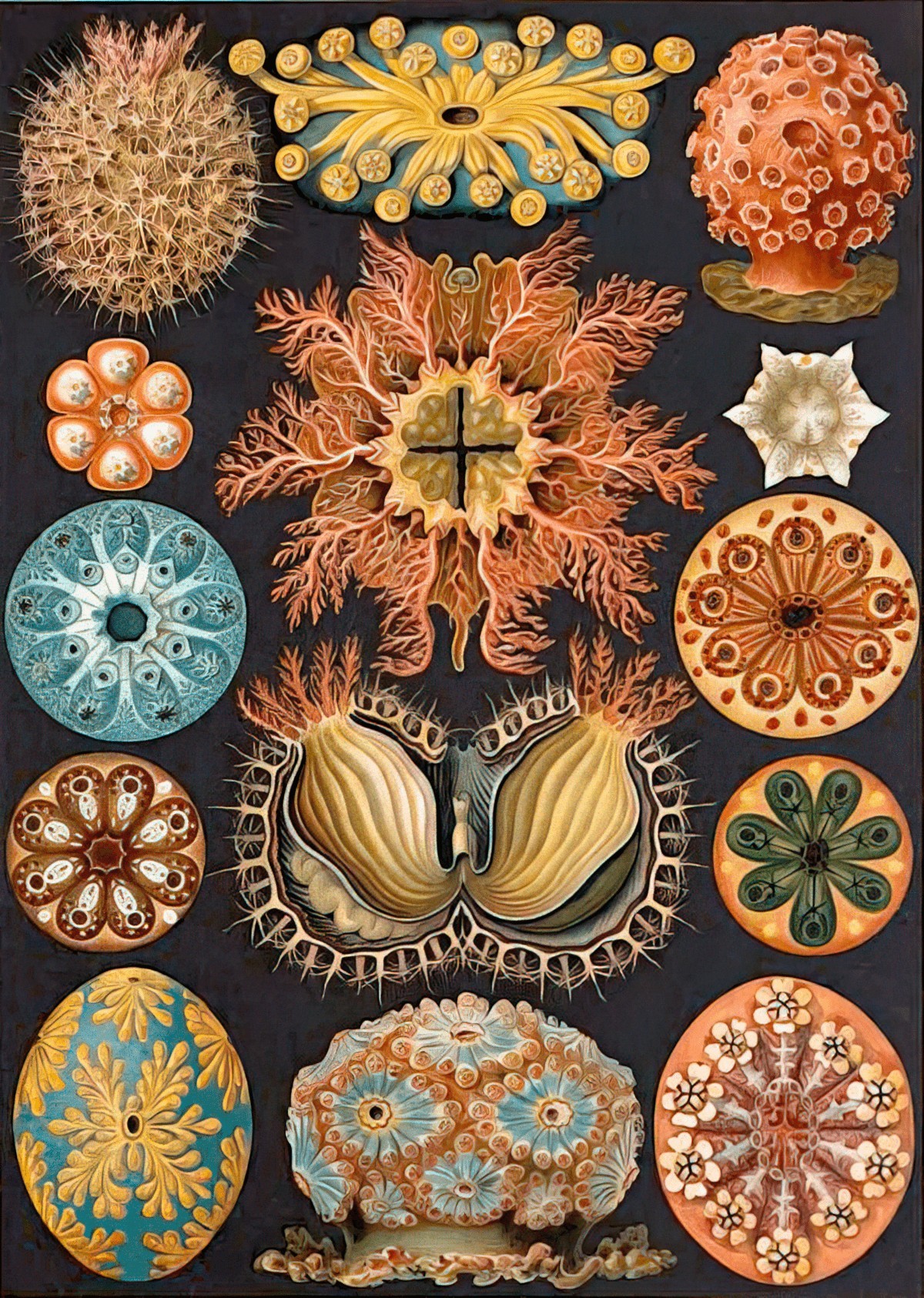
Bats are the only mammals that can fly, but vampire bats are the only mammals that feed entirely on blood. sleep during the day in total darkness, suspended upside down from the roofs of caves. They typically gather in colonies of about 100 animals, but sometimes live in groups of 1,000 or more. The supernatural horror character clearly takes details from this animal. In some cases, vampire bats feature in the stories as bats e.g. “The Vampire Nemesis” by someone called Dolly (1905) is about a suicide victim reincarnated as a vampire bat. (It’s not a good story.) Vampire bats are indirectly terrifying to human communities because they suck the blood out of precious horses and livestock.
Thomas Nagel’s “What Is It Like To Be a Bat?”, Theory & Philosophy podcast (on YouTube)
Bats give birth upside down and catch their babies in their wings.
@qikipedia
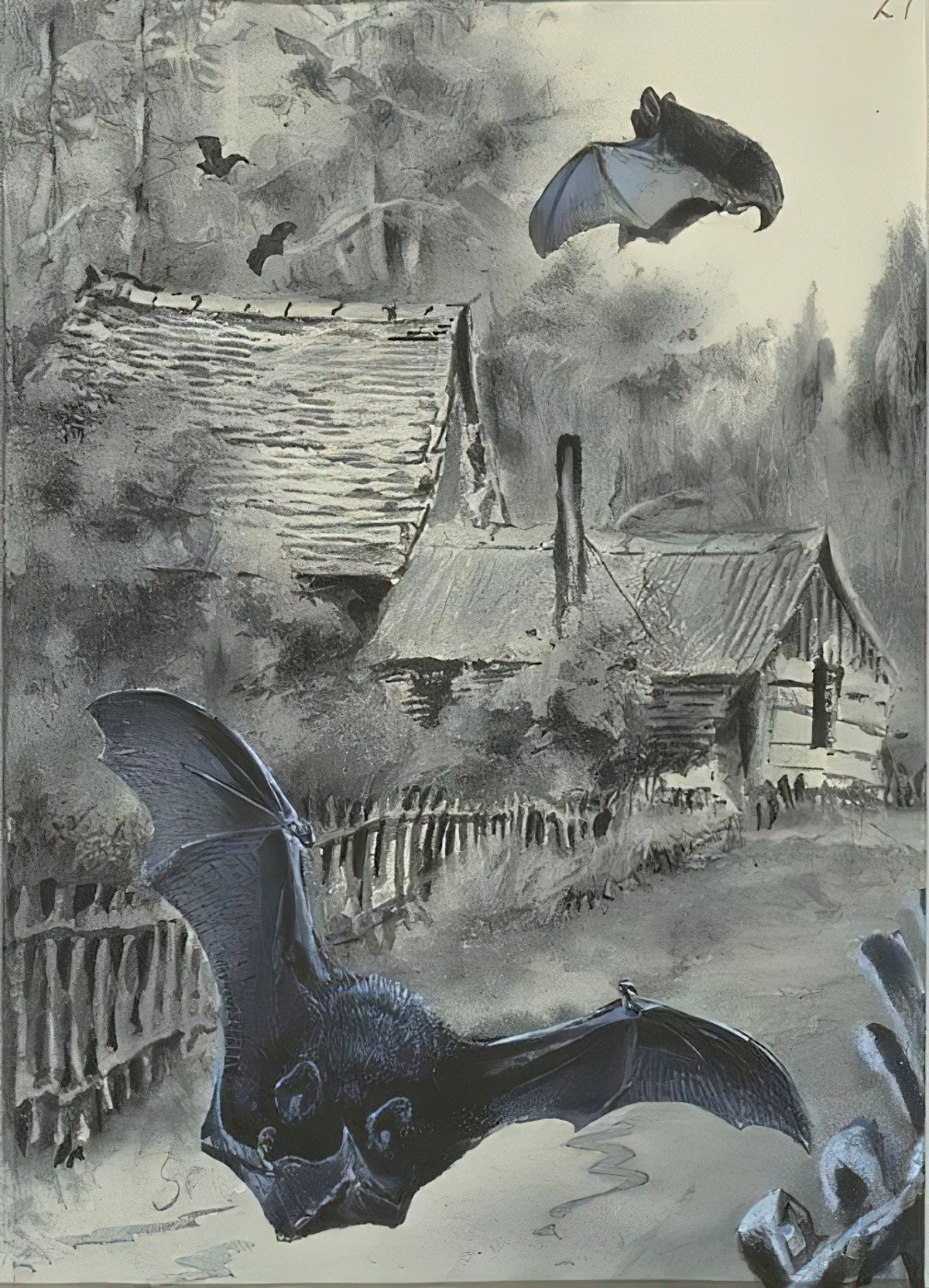
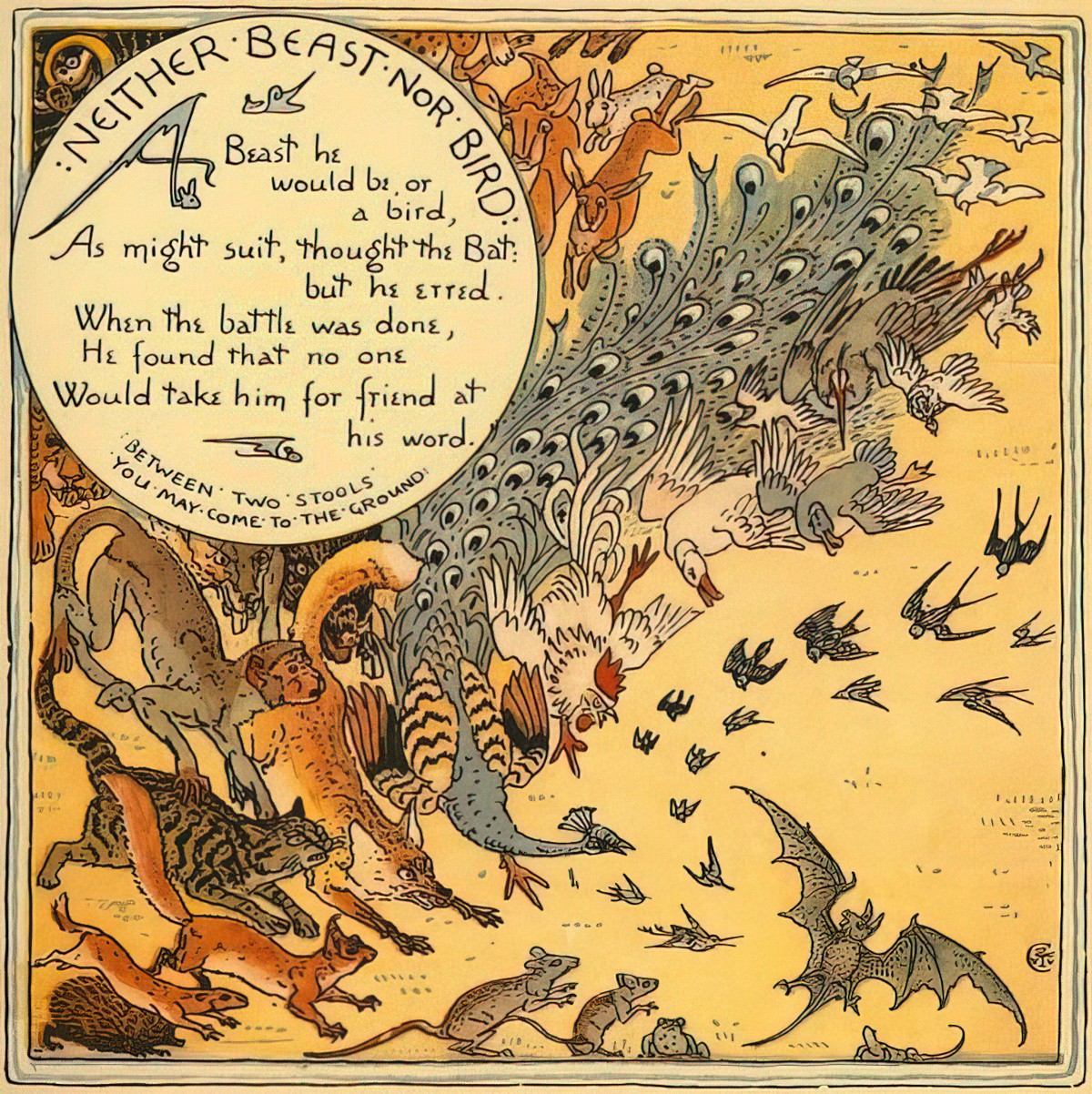
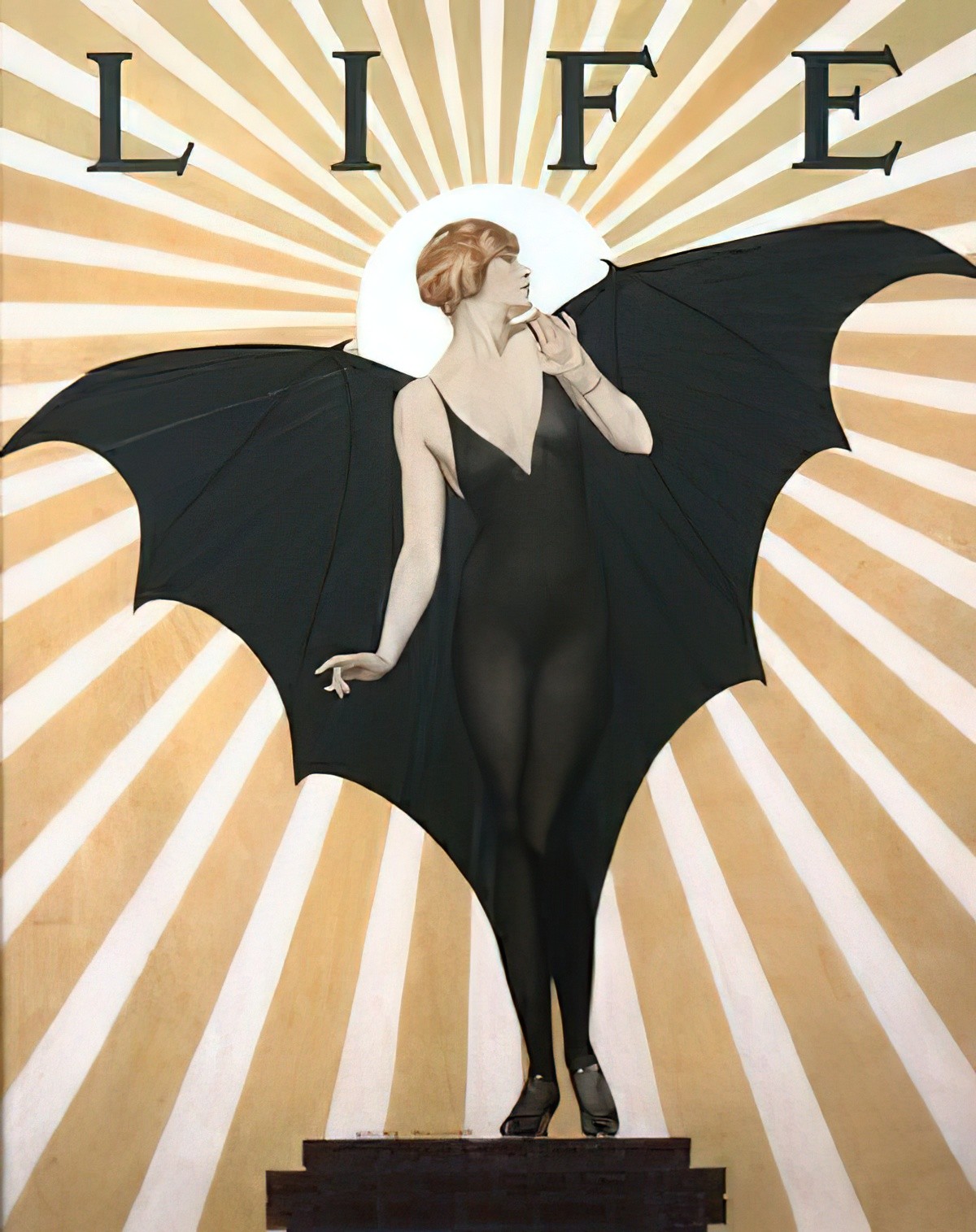
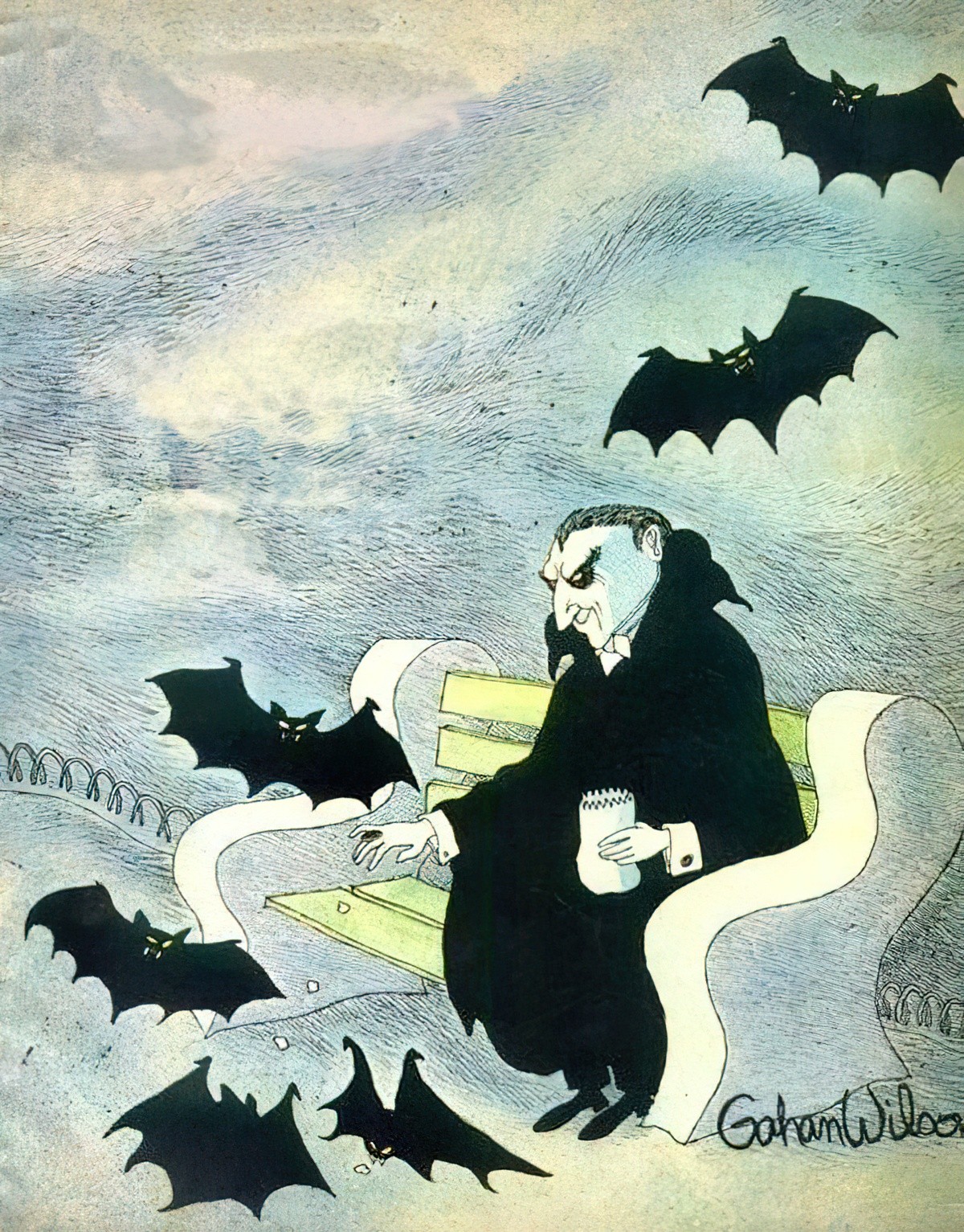





Baudelaire, Charles-Pierre
A French poet who wrote a notorious book of poems called Flowers of Evil. These poems inspired many literary works for years after. They were flamboyant and depraved. He was ordered to remove six of the most offensive poems from his book. Two of these were about vampires: “The Vampire” and “Metamorphoses of the Vampire”.
Binary
Vampires are contradictory. They embody yet challenge the breach between enforced and over-simplistic dualities (human and non-human, male and female, straight and queer). They exist within the contradiction of needing to “pass as human,” so as to avoid getting staked every five minutes—a neat metaphor for the queer subject who, historically as well as currently, needed to “pass” as straight to avoid persecution. They invite questions about what we accept unquestioningly.
Feral Feminisms, Performing Queer Femininity, Rosie Garland
Blacula
Blacula is a 1972 American blaxploitation horror film directed by William Crain. An 18th-century African prince named Mamuwalde is turned into a vampire (and later locked in a coffin) by Count Dracula in the Count’s castle in Transylvania in the year 1780 after Dracula refused to help Mamuwalde suppress the slave trade.
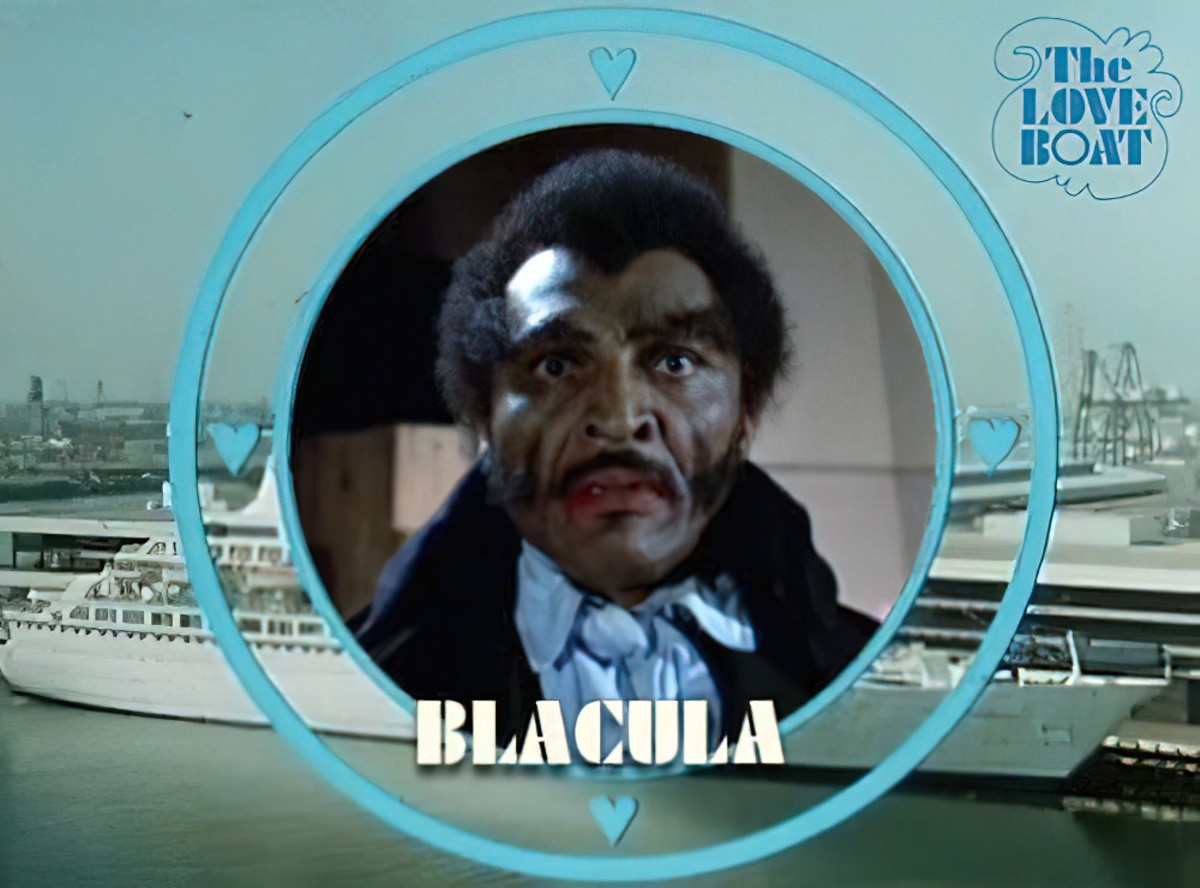
BLOOD
While vampires treat blood like an elixir, in reality it’s watery, devoid of nutrients and laced with iron. Blood is nature’s crash diet. See: Lost Genes Explain Vampire Bats’ Diet Of Blood from Scientific American.
Bloodlust
An obsessive desire for blood (probably human). Blood drinking is not just a vampire thing. In classic chivalric romance, when the young man in the woods is captured by a fairy queen and taken away to a dangerous fairy land, the fairies may drink blood. Blood drinking is connected historically to ancestors as well as to fairies — it has been believed in the past that if ancestors are not fed carefully they will take revenge by drinking the blood of living members of the family.
Body parts
Severed body parts are a horror trope, used equally in vampire horror. “The Blood Fetish” by Morley Roberts (1909) features a severed hand which takes on a life of its own, absorbing blood. “A Dead Finger” by S. Baring Gould is about a man haunted by an animated finger. He is attacked vampirically after the rest of the finger’s body materialises.
Body snatching
Body snatching is the secret removal of corpses from burial sites, though bodies usually weren’t dug up out of graves. In Britain, bodies used to be kept in mort houses until the ground warmed up and could be more easily dug up. (They had no back hoes back then.) A common purpose of body snatching, especially in the 19th century, was to sell the corpses to medical schools. This crime fed vampire mythology of the day and was clearly on everyone’s mind. People worried about their bodies being dug up could order an iron structure in the shape of a coffin. This was called a mortsafe. The family might also hire guards, though guards could be bribed.

Bram Stoker
Bram Stoker was the writer to bring the name ‘Dracula’ together with the vampire story. He brings all the humanness of Vlad the Impaler (Vlad Tepes) to a monster. Stoker wrote Dracula as well as several other crappier stories. He was stage manager for famous Shakespearean actor Henry Irving in the 1870s.

Byronic vampire
He is tall and gaunt, bordering on emaciated. He has a pale, spectral face. His demoniac eyes show he understands sin and passion. Those eyes seem to penetrate into the heart of his victim. He can read her thoughts. He has a wide mouth with thin, cruel lips. The lips are a brilliant red because he’s been sucking blood. They curl back in anger to reveal long, sharp teeth. He wears funereal black. His long black coat flaps about him like bat wings. In other words, he is irresistible. He has a magnetic personality and is sexually fascinating. He approaches his victims as a lover rather than as a predator. He lulls her into a false sense of security.
Camp
Some vampires are camp, which basically means a preference for reversal and a preference for artifice over nature.
Cannibalism
Vampires (and also zombies) are supernatural creatures with cannibalistic tendencies, though as Anne Rice’s vampire points out, at least vampires only take your blood (and, okay, maybe your ‘vitality’). They don’t butcher you dead for your meat and leather.

Carmilla
Considered the greatest vampire story prior to Bram Stoker’s Dracula. This novella was written by Joseph Sheridan Le Fanu, published 1871. Carmilla revolves around a beautiful female vampire’s attempts to seduce a frail young girl. It’s a lesbian love story. Vampire stories about female vampires were highly unusual at this point.
Carmilla still has the bloodlust and the unnatural strength and near indestructibility of the male vampires but this is the dangerous lover – the outsider who lures women away from their proper place, but who is defeated by the good, moral, upstanding man.
The vampire part only comes in at the end. Psychologically, the story was ahead of its time. (Historically there are very few gay vampire stories featuring two male characters.)
For me the most relatable 19th century vampire is Carmilla, who never gets out of bed before noon, can’t stand more than ten minutes of exercise, and awkwardly tries to seduce her victim-crush by telling her weird things about caterpillars she read in an encyclopaedia.
Originally tweeted by Icona (@Iconawrites) on April 16, 2020.
See also: Carmilla: The Original Lesbian Vampire? by Andrea Mariana
There is now a Canadian web series of Carmilla, which found approval with queer reviewers. On the back of its success, a movie has been funded by fans of the web series.
And on the back of that came the young adult novel.
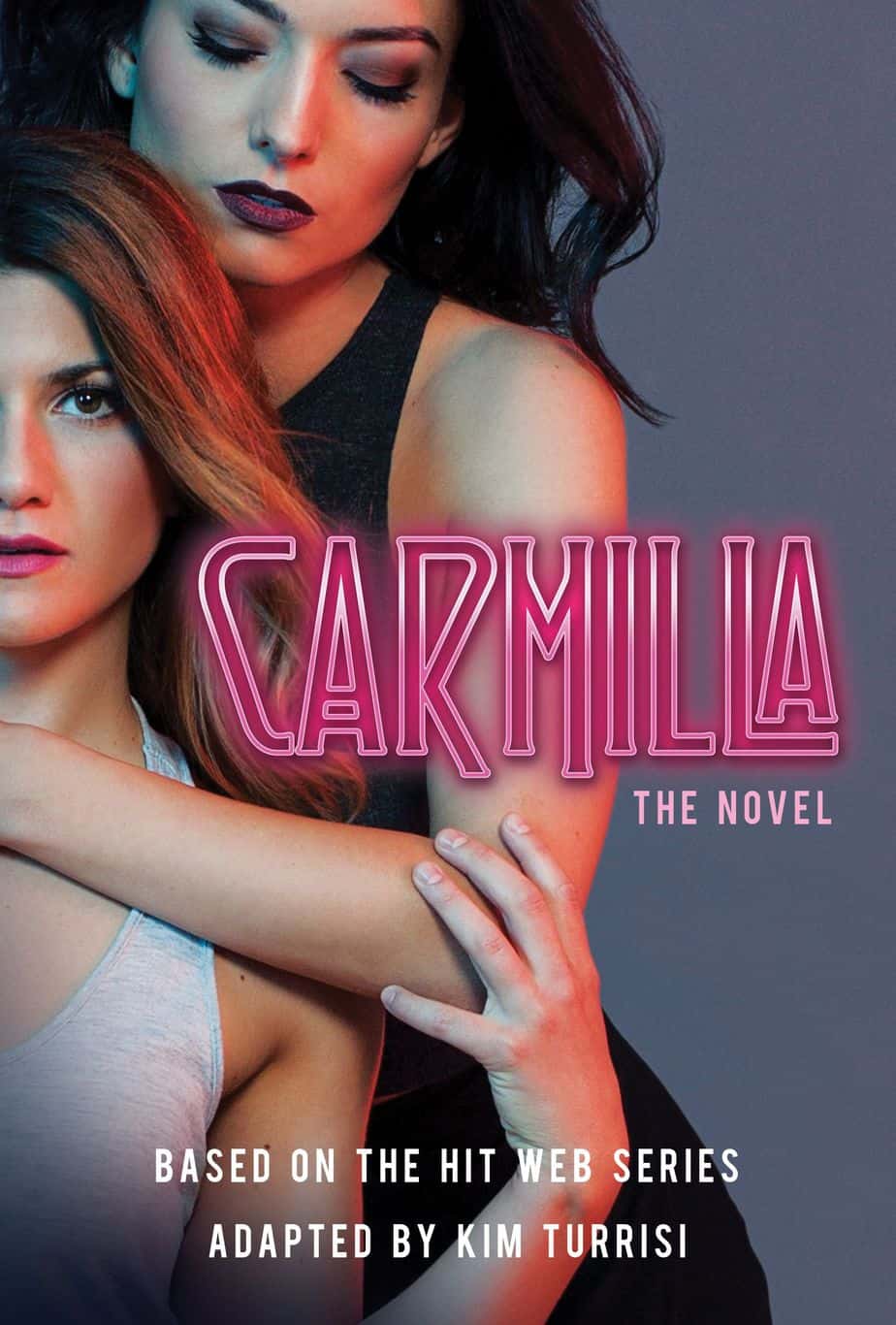
Newly escaped from the stifling boredom of a small town, college freshman Laura is ready to make the most of her first year at Silas University. But when her roommate, Betty, vanishes and a sarcastic, nocturnal philosophy student named Carmilla moves into Betty’s side of the room, Laura decides to play detective.
Turns out Betty isn’t the first girl to go missing ? she’s just the first girl not to come back. All over campus, girls have been vanishing, and they are completely changed when (or if) they return. Even more disturbing are the strange dreams they recount: smothering darkness, and a strange pale figure haunting their rooms. Dreams that Laura is starting to have herself.
As Laura closes in on the answers, tensions rise with Carmilla. Is this just a roommate relationship that isn’t working out, or does Carmilla know more than she’s letting on about the disappearances? What will Laura do if it turns out her roommate isn’t just selfish and insensitive, but completely inhuman? And what will she do with the feelings she’s starting to have for Carmilla?
Chupacabra
Spanish for ‘goat sucker’, a mythological creature which kills livestock. The legend went viral in the 1990s after hundreds of dead farm animals were found in Puerto Rico, drained of their blood. Chupacabra tales soon spread around the world. People think they’ve seen the chupacabra but they’re probably seeing mangy dogs or coyotes.
Class Privilege
Vampires behaving badly are after blood (and sex) but modern vampires also behave badly because of their class privilege. They are very often wealthy as heck. Vampires such as Nosferatu and Count Dracula are from the aristocracy.
The only people able to defeat these aristocratic vampires are young men of equal social standing. Lower classes are either victims or entirely irrelevant.
The ideology behind stories like this: Sure, these upper-class people might be sucking the life blood out of everyone else, but since the only ones capable of preventing their evil are those of equal social standing, social class is kind of inevitable, right? Vampire stories which centre upper class vampires and their opponents help to solidify the status quo of societal inequality.
Aristocratic vampires are a Western spin. When vampire stories belonged to Eastern European peasantry, vampires were unappealing to look at, without manners and only spoke the local dialect. (They were not appealing and exotic.) The shift from ugly vampires to beautiful vampires also marks the shift from vampires stories belonging to the peasantry to vampire stories working for the rich and powerful.
Class and race are linked, so it’s important to talk about class when talking about fantasy creatures. Vampires, wolves, elves, orcs and other fantasy characters often operate as stand-ins for real-world racial subjects. In Twilight, the vampires can be read as Aryan and the werewolves as Indigenous. The majority of the vampires are white while many of the Underworld werewolves are Black. Commentators have written about dehumanisation and beastialisation in the series. Also, the ‘biracial’ child of Bella and Edward is thought to be a threat. A ‘good’ outcome would be that the child brings both warring factions together to end conflict. This suggests one biracial child can erase oppressive violence which extends centuries into the past.

Cloak
Modern vampires often wear normal clothes but last century vampires were associated with a cloak. That cloak with the high collar was a workaround by playwright Hamilton Dean whose stage adaptation of Dracula meant he had to create some way of making it looked like the count vanished into thin air in front of a live audience.
Clutch
A collective noun for vampires
Consumerism
In many modern vampire stories, the vampire is a metaphor for our consumerist ethos. Plastic surgeries, liposuction and similar biomedical technologies helping consumers to regain youth are vampiric in their symbolism.
CROGLIN VAMPIRE, THE
The Croglin Vampire reputedly first appeared in Cumberland to a Miss Fisher in the 1750s. Its story is retold by Dr Augustus Hare, a clergyman, in his Memorials of a Quiet Life in 1871. According to this legend, the vampire scratches at the window before disappearing into an ancient vault. The vault is later discovered to be full of coffins that have been broken open and their contents, horribly mangled and distorted, are scattered over the floor. One coffin only remains intact, but the lid has been loosened. There, shrivelled and mummified – but quite intact – lies the Croglin Vampire. […] The Croglin Vampire has never been verified – but it has an afterlife in the 20th century, appearing as The British Vampire in 1977 in an anthology of horror by Daniel Farson, who turns out to be Stoker’s great-grandnephew.
Older than Dracula: in search of the English vampire, Sam George
Cryptobotany
Long before Day of the Triffids, carnivorous plants existed in Gothic horror, including in vampire stories. This subgenre was pioneered by Phil Robinson who wrote “The Man Eating Tree” (1881). In “The Story of the Grey House” guests stay at a secluded country mansion but are strangled and drained of blood by a demoniacal creeper growing among the shrubbery. Another is “The Purple Terror” (1899) by Fred M. White.
Curse
Some vampires became this way because of a supernatural curse. Others became vampires via a disease route, perhaps inherited. Sometimes they become a vampire because they’ve been bitten by another vampire (similar to an infectious disease).
DARWIN, CHARLES
What the hell does Charles Darwin have to do with vampires? Did he find some on his travels? Not quite.
In 1882 Charles Darwin confirmed the existence of vampire bats, which suck blood. He sketched one feeding off a horse while he was in South America. Before then, vampire bats had been considered a supernatural slash real sort of creature by the English. Natives of Renwick (Cumbria), were known as ‘bats’ because of talk about a monster which flew out of the foundations of a rebuilt church in 1733.
Dawn
Some vampires must return to their graves at dawn. This is why the Twilight series makes use of times of day.
Daylight
Nosferatu was the first vampire to be killed by daylight. We’ve since seen others.
Dead wizards
Wizards are vampires when they die.
Decadent Movement
This movement was an influential force in European literature in the late 1850s. Its heyday was the 1880s. Vampire stories escaped straight Gothicism but became more sadist. Horror stories of this movement are obsessed with death and corruption and exploring abnormalities of sexuality. If Victorian society considered something taboo, you could probably read all about it in Decadent horror. The Decadents were morally influenced by Sade. They were thematically influenced by Poe.
Disease
One commonality shared by vampires worldwide: Their presence is associated with some sort of unknown illness, outbreak or epidemic. In America, localised vampire crazes usually started when someone died of consumption (i.e. tuberculosis). Unlike cholera or the bubonic plague, consumption doesn’t kill quickly. Tuberculosis ‘consumes’ its victims and is your archetypal ‘wasting disease’. It drains vitality from a person. (In the case of “galloping consumption” the disease doesn’t reveal itself until near the end of the patient’s life.)
In some vampire stories, vampires spread disease. Vampire mythology is itself sometimes an allegory for the spread of disease. Diseases spread by blood are especially prone to this treatment.
The Real Life Diseases That Spread The Vampire Myth
You were considered a good candidate for becoming a vampire yourself if you suffered from diseases such as:
- Porphyria: A rare genetic disorder leading to a breakdown in the production of heme (the red pigment in blood). It causes the skin to become hypersensitive to sunlight, gum tissue to recede and give the appearance of fangs. Some victims grow hairier.
- Pellagra: Causes hypersensitivity to light. Skin turns scaly and parchment-thin. The tongue blackens due to bleeding sores and leads to insomnia, irritability and dementia. Pellagra results from a deficiency of niacin and tryptophan. Peasants who ate a diet overly dependent on corn were susceptible.
- Rabies: Rabies symptoms also match vampire descriptions: bared teeth, bloody frothing at the mouth and hoarse groans induced by spasms of the face. These spasms are caused by visual stimuli or strong odours (such as garlic).


Dissertatio historico-philosophica de masticatione mortuorum
In 1679 Protestant theologian Philippus Rohr or the University of Lipsia published a “non-fiction” book describing the habits of the revenant.
Dracula
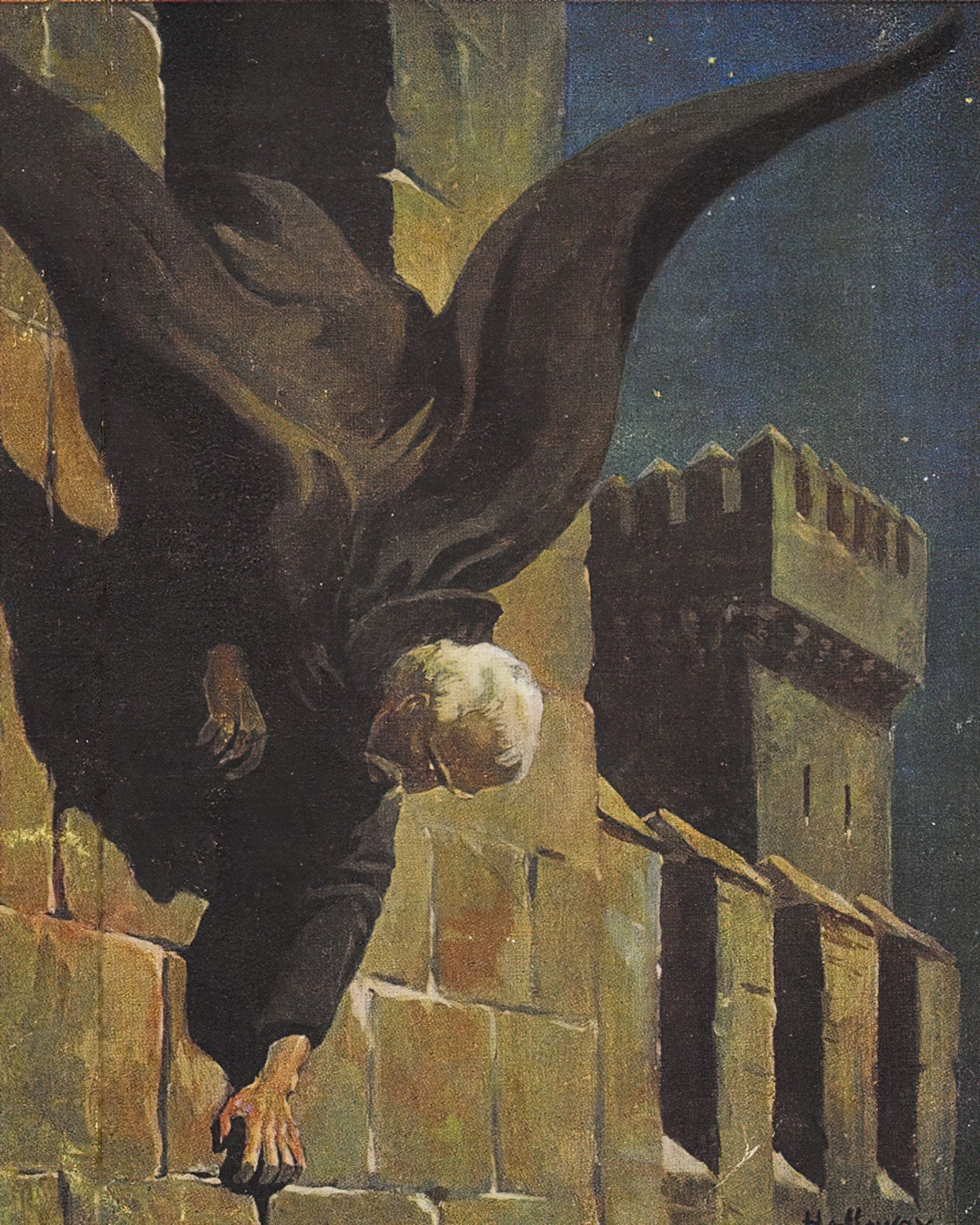
A classic West-centric novel by Bram Stoker, epitomal vampire story and a best seller since it was first published in 1897. Associates an undead lord with a harem of female vampires. Count Dracula is an imperialist, aristocratic, colonizing homicidal lunatic and human bloodsucker. This is the story that systematised the rules for vampire stories. This book is out of copyright and can be read freely online.
The end of Dracula reassures audiences that Western law and order will prevail. Life will go on as it always did before the Eastern vampires briefly turned up to disturb the peace.
Some classic novels have been constantly adapted over generations, and some, like Bram Stoker’s Dracula have created a whole genre.
Draugr
The Scandinavian vampire/revenant creature is often called a draugr. But more recently the word refers to unidentified people drowned at sea.
Drop Bear
If you’ve ever met an Australian at a tourist destination the Australian may have joked with you about the deadly Australian beast known as the Drop Bear (Thylarctos plummetus). There is no such thing as a Drop Bear. Eventually you’ll realise they are talking about a koala. The urban legend of the Drop Bear functions as a cautionary tale about the dangers of the Australian bush, but also subverts the idea that Australia is deadly no matter what you do and where you go. (Australian animals are dangerous, but if you die in Australia, chances are good it won’t be animals that kill you.)
A paper called Man-Eating Teddy Bears of the Scrub: Exploring the Australian Drop Bear Urban Legend posits that the legend of the Drop Bear is at its heart a vampire story. In common with other vampire mythologies from around the world, the Drop Bear is said to prey on humans to consume and corrupt us.
Dualist Religion
Followers of dualist religions consider all matter as evil and all spirits as good. An example of a dualist religion: Manichean Bogomilism, a 10th century Bulgarian sect of Christianity that called for a return to early Christian teachings and a rejection of the political ambitions of their current ecclesiastic leaders.
If you’re a follower of a dualist religion, you’re prone to believing in things like vampires. Due to the nature of the (unmarked) graves left by this 10th century sect, it’s likely there was plenty of fear around vampirism.
ECO-VAMPIRES
Simon Bacon’s Eco-Vampires: The Undead and the Environment (2020) is an innovative study of the figure of the vampire as an embodiment of un-tamed wild nature and as a counterpoint to civilisation, technological development and ecological destruction. The first chapter begins with an examination of the ecological credentials of the epitome of the modern vampire archetype—Dracula—and makes a convincing case for the Count’s deep entanglement with the natural world. Far from being a supernatural entity, in the sense of something existing or originating outside of the realm of nature, Dracula might best be understood in Jeffrey Kripal and Whitley Strieber’s titular terms as super natural—emerging from, and part of, the natural world (Strieber & Kripal, 2016). Dracula is presented in this book, along with vampires more generally, as a force of nature restoring ecological balance and threatening the destructive dominance of humanity. Bacon essentially makes the point that Dracula is the apex predator of his ecosystem, modulating population dynamics in the environment around his castle and ensuring ecological sustainability
Simon Bacon, Eco-Vampires: The Undead and the Environment
(Jefferson: McFarland, 2020)
Ekimmu
The ‘ekimmu’ of Ancient Assyria were the ghosts of people who had not been properly buried. They became very hungry and thirsty and as no offerings had been made to them, they sucked the blood of the living. Their appearance meant certain death.
Elizabeth Báthory Of Transylvania
A real-life noblewoman who allegedly tortured and murdered hundreds of girls. also Rumoured to be a vampire, and the first example of the lesbian vampire in vampire legend.
Embrace
Sometimes this verb is used to mean the process of transformation into a vampire.
Erotic symbolism
In the repressive Victorian era censorship and strict moral codes prevented authors from writing erotic vampires (as the Romantics had done previously) so writers had to rely on a complex set of symbols to convey the same ideas.
(Un)safe sex: romancing the vampire, from a movie journal, Cineaste.
Some cultures utilise vampire stories to subvert and transgress cishetero-normative ideas about sex and gender pushed onto communities via Judeo-Christianity which came with colonialization. Mexican writers are especially well-known to have used avant-garde vampire mythology in this way.
Fangs
Blood-sucking vampires need to somehow puncture the skin so often have fangs. Fangs are the sexiest kind of teeth. Sometimes those are retractable or extend when feeding. Less attractive vampires might have shark or rodent teeth, or teeth like the inside of a leech’s mouth. The vampires in Twilight don’t have fangs but their teeth are sharp and coated in venom.
a guy walks in with two puncture wounds on his neck like “u should see the other guy” and then a vampire walks in covered in those cartoony lipstick kiss marks
ohsweetflips
Fatal Man
The Fatal Man is a male anti-hero archetype created by the founders of the Romantic school of literature.
Fatal Woman
The Fatal Woman is a female antihero archetype created by the founders of the Romantic school of literature. She is more of a stock character than her male counterpart, because she’s the female equivalent of the Byronic vampire. She is an insatiable nymphomaniac even after she’s dead. She can be described in absolutes: absolutely beautiful, absolutely perverse, absolutely seductive. She is the quintessence of glamour. Like the male Byronic vampire her mouth is slightly too large. She loves the smell of rot. She inhales it like it’s an expensive perfume. She’ll have long red hair, either groomed in an irredescent coiffure or worn loose, in curls like snakes. When she drops her mask she is revealed to have the hungry visage of a praying mantis. Of all the Fatal Woman characters, the female vampire is the most deadly. After Baudelaire wrote his infamous vampire poems, the Fatal Woman dominated the scene. In one of the poems, the narrator imagines himself surrendering masochistically to the kisses of a fierce female vampire. The Fatal Woman dominated vampire stories until Bram Stoker came along.
Female vampires
At first, female vampires were rare. But as vampires became sexualised female vampires became popular. (All female monsters are at some point sexualised because sexualising a female monster is one way to subdue her. It happened to sirens, witches and so on.)
Femme fatale
The female Byronic vampire is your classic femme fatale, but femmes fatales go back way further than that. Cruel, sensuous women who like to destroy their lovers can be found in the literature of Antiquity and the Renaissance. But it was the Decadents (and later the Symbolists) who made her into an established archetype. By 1900, the ‘vamp’ had become a cliche.
Fledgling
a newly spawned vampire (a word from Anne Rice novels)
Free will
Unlike zombies, modern vampires have free will. They get to choose whether they are good or evil, depending on their individual choices. Some vampires are able to achieve a mutually symbiotic relationship with regular humans.
Ghoul
in vampire subculture, a ghoul is a servant under a vampire’s supernatural influence or control
Glamour
The female Byronic vampire is the quintessence of glamour.
Golden Age of Supernatural Fiction
By the start of the 1910s the golden age of supernatural fiction was drawing to a close. This subgenre of fantasy had been going strong since 1887. During this period: the first volumes of M. R. James’s ghost stories, Algernon Blackwood masterpieces like “The Wendigo”, Stoker’s Dracula, Arthur Machen’s “White People” and Henry James’s novella The Turn of the Screw. This period has been hugely influential on later cosmic horror e.g. Lovecraft said he was influenced by James, Machen and Blackwood.
Gothic
The Gothic is notoriously difficult to define and many writers don’t even try. (Gothic is a term mostly utilised by academics, and academics don’t agree on a definition.)Against what we might think, the vampire was almost entirely absent from fiction written in the high Gothic style. An exception is “Wake Not the Dead” by Johann Ludwig Tieck (c. 1800).
Grave robbing
The crime of stealing valuables which have been buried with the dead. This fed vampire mythology. Grave robbery is far more common than we might expect. Archeologists have been regularly disappointed to find historically significant graves which have been previously done over by robbers.
Hawthorn
The preferred wood for staking vampires. Also associated with Christ’s crown of thorns. Thorns on a grave were thought to prevent the dead from wandering about. According to Serbian lore, a secondary meaning of Hawthorn is ‘butterfly’, one of the forms assumed by the soul.
HIBERNATION
In a number of vampire stories, vampires don’t simply sleep. They fall into a state of hibernation. Ray Bradbury utilises this trope in his short story “The Man Upstairs.” If you play The Sims with a supernatural expansion pack, you’ll know that vampires can hibernate in the game. This is a useful game mechanic.
So exactly what is the difference? And how long can you leave a vampire in hibernation? If you are playing a lot of Sims in a household it seems like a good way to park one if management is getting out of hand.
Hibernate is more… permanent. *you* have to wake them up, they won’t otherwise. Sleep is just sleep, they’ll wake up when their energy is full.
From a Sims discussion board
Histoire des vampires
Tournefort, botanist to King Louis XIV of France, sailed to Levant in 1700 in search of plants for the Royal Garden. But he found instead a plague of vampires on the Greek Isle of Myconos.
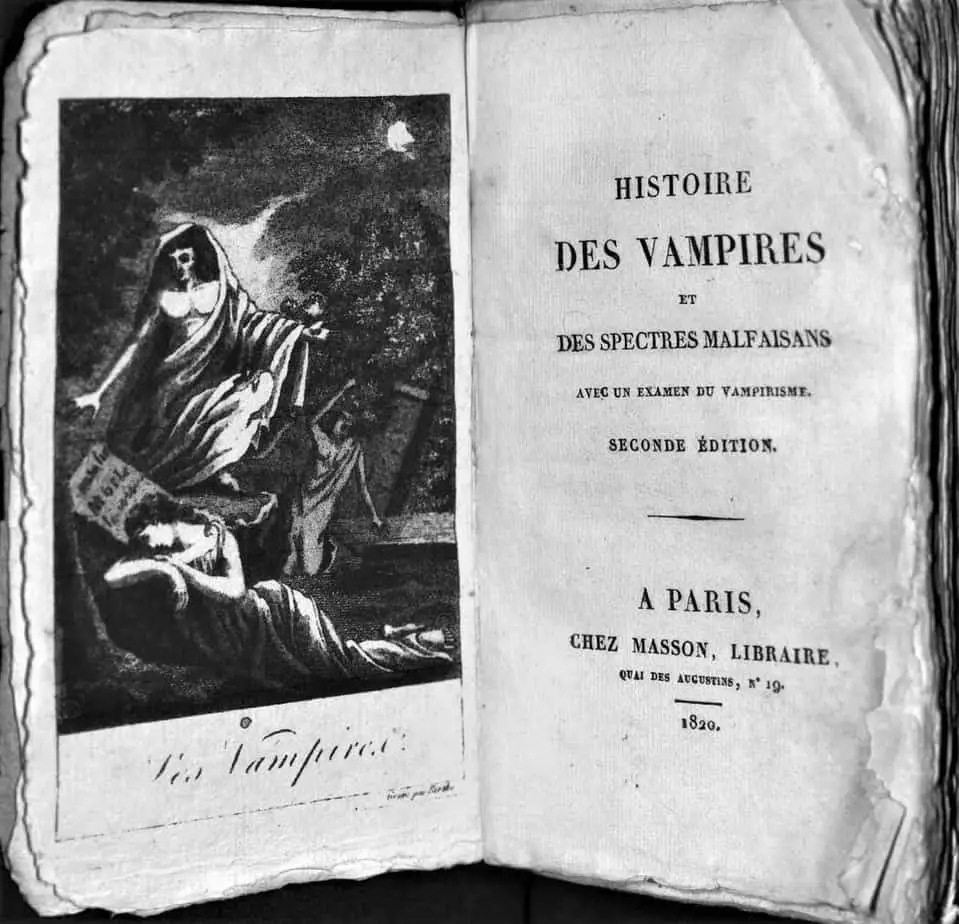
Inhumation
Inhumation is the archaeological term for the action or practice of burying the dead; the fact of being buried. Also refers to a burial or buried corpse.
Jubokko
The Jubokko is a vampire tree in Japanese folklore. It appears in battlefields where people have died and sucks up the blood from the dead. When a human being happens to pass by, it captures the victim and sucks the blood out of them.
Knots
Vampires are supposed to be able to unravel any knot they come across.
Horla, The
“The Horla” is a short story by Guy de Maupassant about an invisible vampire (1887).
Incarnate
Embodied in human form, especially when it refers to a deity or spirit.
Insects
Vampires aren’t always human. “The Feather Pillow” by Horacio Quiroga (1907) is about a young woman whose blood is gradually sucked out of her body by a monstrous insect hiding in her pillow. “The Electric Vampire” by H. Power (1910) is about a mad scientist who creates a giant electrically charged insect who feeds vampirically on human blood.
Jiangshi
A Chinese vampire, also known as a Chinese hopping vampire or hopping zombie. It is a stiff corpse dressed in traditional clothing. It moves by hopping about with its arms outstretched. Unlike Dracula inspired vampires they can see their own reflections but are terrified of them.
La Morte Amoureuse
The most famous vampire tale of its era (published 1836) written by Theophile Gautier.
Leech
More animals than you think might suck on your blood, though the leech is one of the best known. And like vampires leeches have a ‘dual nature’ in relation to humans — enough leeches could kills us, but they’ve also been used medically. Today they are still used in many parts of the world to help heal wounds and restore circulation in blocked blood veins. Fleas, female mosquitoes, ticks and lice also consume blood from living beings — less commonly known is a bird known as the vampire finch. There’s also a vampire squid. Mosquitoes kill the most people worldwide but the candirú is perhaps the scariest. It swims up your urethra. Then there’s the lamprey. Lampreys latch onto a host with hook-like teeth and gulp down its blood as it swims. Fish don’t have arms and have no way of getting a lamprey off.


Let The Right One In
Let The Right One In is a Swedish story about bullying. A boy in Sweden is being bullied mercifully at school. An odd girl appears around his housing estate and starts looking out for him. She has no parents and has a middle-aged man there but she’s obviously the one in charge.
The ending is classically understated, as often seen in Scandinavian cinema. It’s quite horrific. This movie depicts the traditional view of the vampire as a monster.
Life force
In some stories, vampires drain life-force. Commonly this is by drinking blood, but they might take some other bodily fluid or by frightening victims to death.
Liminal Spaces
Liminal describes in-between spaces and states.
Thresholds and liminal spaces are dominated by the vampire, a liminal creature in itself, and it is inside these places where the supernatural, the ceremonial, the uncanny, and the abject prevail
Daniela Zárate Anastacio
Lord Ruthven
Lord Ruthven is the prototypal vampire (the first to appear in literature), based on a real-life nobleman Lord Byron, created by Dr. John William Polidori, 1819, in a story called “The Vampyre”.
Dracula wasn’t the first vampire in English literature, let alone the first to stalk England. The vampire first made its way into English literature in John Polidori’s 1819 short story “The Vampyre”. Polidori’s vampire, Lord Ruthven, is inspired by a thinly disguised portrait of the predatory English poet, Lord Byron, in Lady Caroline Lamb’s novel Glenarvon (1816). So the first fictional vampire was actually a satanic English Lord.
Older than Dracula: in search of the English vampire by Sam George
Polidori was Lord Byron’s secretary and traveling companion. Lord Byron was flamboyant. The fictional creation Lord Ruthven was considered shocking in its day because writers didn’t normally write noblemen as monsters.
Because of “The Vampyre”, a slight evolution took place in the presentation of the vampire from monster to seductive. The Vampyre has a sinister, haughty aristocrat, with much physical beauty. Instead of blood and violence being the focus, this antihero has much physical beauty. He drinks blood but he is immensely charming. This is also the point at which the victims become predominantly female.
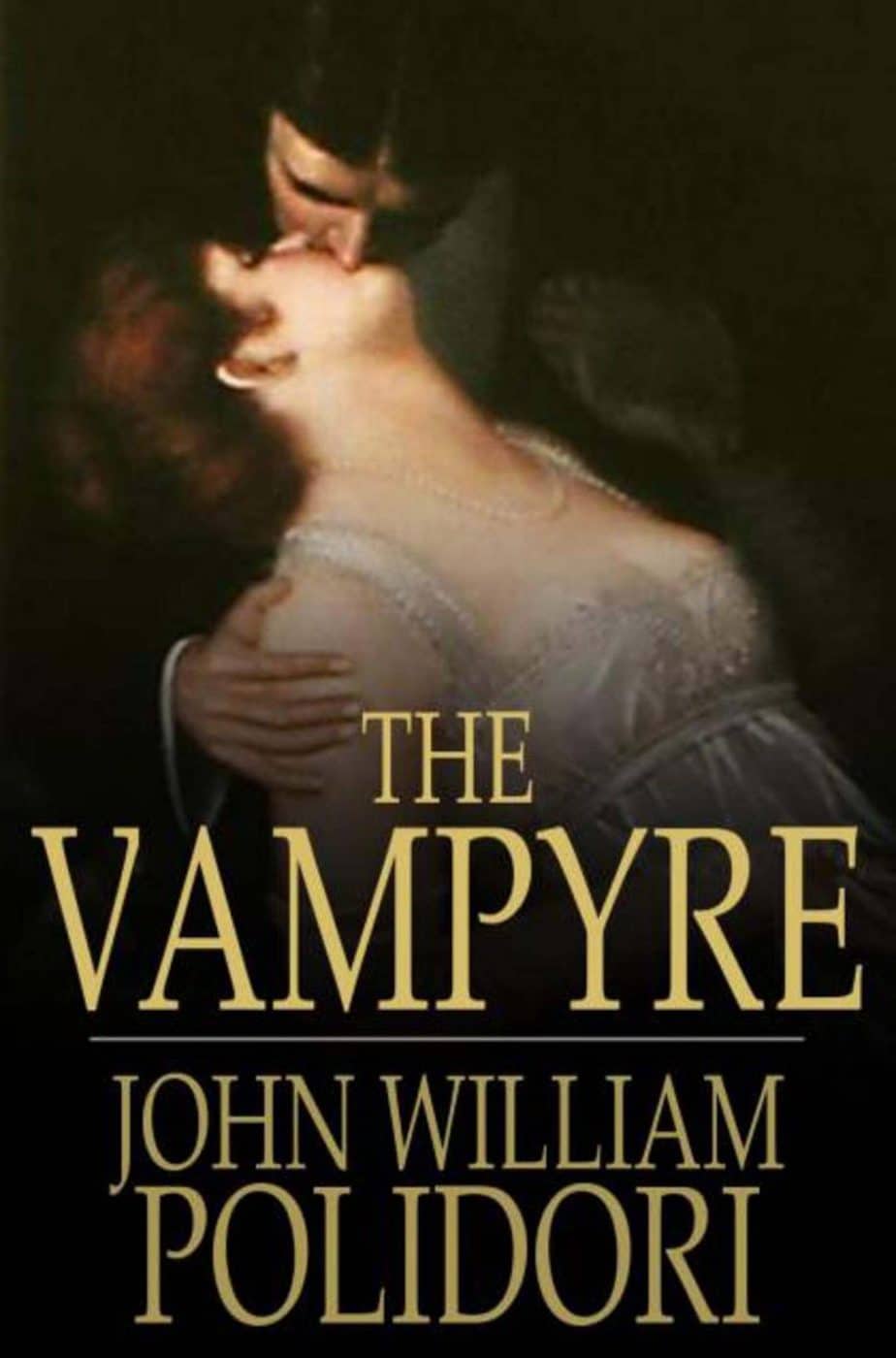
John Polidori’s classic tale The Vampyre (1819), was a product of the same ghost-story competition that produced Mary Shelley’s Frankenstein. The present volume selects thirteen other tales of mystery and the macabre, including the works of James Hogg, J.S. LeFanu, Letitia Landon, Edward Bulwer, and William Carelton. The introduction surveys the genesis and influence of The Vampyre and its central themes and techniques, while the Appendices contain material closely associated with its composition and publication, including Lord Byron’s prose fragment Augustus Darvell.
JOHN POLIDORI – The Vampyre
HORACE SMITH – Sir Guy Eveling’s Dream
WILLIAM CARLETON – Confessions of a Reformed Ribbonman
EDWARD BULWER – Monos and Daimonos
ALLAN CUNNINGHAM – The Master of Logan
ANONYMOUS – The Victim
JAMES HOGG – Some Terrible Letters from Scotland
ANONYMOUS – The Curse
ANONYMOUS – Life in Death
N. P. WILLIS – My Hobby,–Rather
CATHERINE GORE – The Red Man
CHARLES LEVER – Post-Mortem Recollections of a Medical Lecturer
LETITIA E. LANDON – The Bride of Lindorf
JOSEPH SHERIDAN LE FANU – Passage in the Secret History of an Irish Contess
LUGANO
Just recently at an ancient Roman site in Italy the severed skull of a ten-year-old child was discovered with a large rock inserted in the mouth to prevent biting and bloodsucking. Then skull belongs to a suspected 15th-century revenant which they are calling locally the “Vampire of Lugano”.
Older than Dracula: in search of the English vampire by Sam George
Mental vampirism
This is a type of vampirism where the villain gets into a victim’s head and steals their ideas e.g. The House of the Vampire by George Sylvester Viereck (1907). (This novel is probably a satirical dig at Oscar Wilde.)
Mercy Lena Brown
Mercy Lena Brown is a well-known American “vampire” from Rhode Island. First Mercy’s mother and sister died of consumption. Several years later, Mercy died too. The brother had moved to Colorado for the climate after he also fell sick. But after Mercy died he came back home and relapsed. Naturally, the townsfolk concluded that one of the dead members of his own family were preying on him.
The father was still alive. He was persuaded to give permission to dig all the bodies up. They found that Mercy’s mother and sister had already decomposed, as you do, after some years. But Mercy had died more recently, and in winter. Her dead body was well-preserved by the cold as it had been stored in the mausoleum until a decent hole could be dug. She also had some blood around her mouth. Obviously a vampire.
In 1892 the people who dug Mercy up removed her heart and liver and burned them. The ashes of her burned heart and liver were fed to her brother. But the brother died anyway, four months later.
Morality Tale
Morality tales are stories which teach audiences the difference between right and wrong, according to the morality of the time and culture.
Vampire stories commonly teach the following to young women: Do not meandering beyond the security of your own culture, class and experience. Leave the running of society to upper class young men.
Mormonism
With the success of Twilight, author Stephenie Myer runs the commercial arm of her business which delivers Twilight, the movies, the spinoffs etc. Her husband has left work to look after the kids while she does all of that.
One of the key elements that keeps coming up about Myer: She is a member of the Mormon church. It’s a much larger movement in the USA than in Australia because it began in the United States. It’s a branch of Christianity, started by Joseph Smith near New York, who received, he says, a book from the angels which he translated.
Within that book of Mormon, looking largely at America as a centre of religious belief, and Native Americans as connected to the New Testament story of Jesus. Joseph Smith and his family said that God had given him a mission, that all the other churches had got it wrong and become corrupted. It was now up to him to change them and get back to being good.
Christian Primativist churches (of which Mormon is one) is a movement toward returning to earlier beliefs. Mormonism is based around the idea of ‘crusade’. It has a stated role to change things. All churches fit somewhere on that continuum, but in Mormonism this crusade part of the culture is clearly expressed.
How does this affect the commentary on Twilight?
The books are very, very sexualised. There is a huge emphasis on physical appearance, male-female interaction, desperately falling in love, the expression of the key characters’ sexuality. There is also a lot of violence. The very concept of the vampire is dangerous. The sheer physicality is there. Despite that, the morality (the right and wrongness) is very very conservative.
Abstinence is emphasised. The whole book is structured around unresolved sexual tension. Will I or won’t I? I want to. You mustn’t. Abstinence is the key to it.
It’s also heteronormative – standard boy-girl relationships. Similar appearance, similar age. White Europeans.
There’s also submissive femininity. The girls go along with what the boys suggest.
The vampires are worried about the souls, not only of themselves, but of the people around them, and whether they can be redeemed. Twilight is neither a horror nor a monster story; it is a love story. Morality revolves around interpersonal relations, not upon the diet of vampires.
In the story itself, what do we have that demonstrates those ideas?
Bella has virtually no agency. She can’t make choices and decisions that change the course of her life. It starts with her parents who split up. Bella is left to go somewhere. From then on she responds to Edward. She is reactive, not proactive to his suggestions. Is Edward a stalker? He lets slip that he hangs round her bedroom all night. He’s been doing it for a month before they’ve even started going out together. This is symbolic of him as the one controlling/supervising/demanding/initiating/concluding all of the actions. When she decides to go shopping and gets into trouble with some boys following her, of course he’s there. He’s the one who solves the problem of getting rid of other vampires. Bella almost sleep walks throughout he story. In moral terms, though, he is the one who won’t kiss her. He is the chaste vampire. In fact, she is seen as quite unreliable. She freely admits that she’d probably leap into whatever situation he suggested at the drop of a hat.
Myer has therefore been called anti-feminist. She romanticises an abusive relationship. This is a very unequal relationship. All of the red flags of an abusive, over-controlling relationship are there in the story. Bella is absolutely dependent upon Edward. He is there to protect her life, her virginity, her humanity.
Myer has disagreed with this. It’s all around Bella’s choice, and she’s the one who chooses Edward. “Her damsel in distress persona is only due to her humanity.” But surely that’s the feminist point – that she is being portrayed as human and therefore weak.
So what message does this send to readers about the moral capacity of girls to make their own choices?
They require a strong male to protect them.
The sin resides in the girl (descended from Eve), and requires a strong boy to protect her from herself. (There are places in the world where women are not allowed to leave the house without a male protector. We see this as incredibly wrong yet surely this is what Edward Cullen is doing here.)
A couple of books later, when finally Bella and Edward do get married, have sex, and have a baby, Bella explodes and childbirth kills her. (This being a vampire story, they live happily ever after.)
NABESHIMA, THE VAMPIRE CAT OF
“The Vampire Cat of Nabeshima” is a Japanese folktale about a shapeshifting demon in the form of a cat. The cat terrorizes a prince. A devoted soldier steps forward to protect him.
If you’d like to hear “The Vampire Cat of Nabeshima” read aloud, I recommend the retellings by Parcast’s Tales podcast series. (They have now moved over to Spotify.) These are ancient tales retold using contemporary English, complete with music and Foley effects. Some of these old tales are pretty hard to read, but the Tales podcast presents them in an easily digestible way. “The Vampire Cat of Nabeshima” was published June 2021.
Nachtzehrer
German for “night-waster”. In German folklore, a nachzehrer is a sort of vampire. Epidemic diseases like the plague were believed to have been caused by the nachtzherer. The plague would wipe out the human population to support the growth of vampires.
Naturalist
In the 1700 and 1800s vampire stories got the high Gothic treatment. But in the early 1900s, on the European Continent, Gothic stories were looking outdated. Vampire stories were getting a more naturalistic treatment. A good example of this shift is “A Vampire” by Luigi Capuana (Italy, 1907). This story doesn’t feel at all like a tale of terror — it is more like a case study.
Necrophobia
Necrophobia is a type of phobia that involves a fear of dead things and things that are associated with death. In Greek it literally means ‘corpse fear’. Vampires are basically the unwelcome undead, and speak to our collective necrophobia.
If we look at the burial practices of various cultures around the world and from antiquity, people have gone to extraordinary lengths to keep the corpses underground: Placing massive boulders on top of graves, placing slabs or multiple smaller rocks on the chest and head as well as wedging the head with lumps of pisé (building material of stiff clay or earth, forced between boards which are removed as it hardens). Sometimes corpses were decapitated. Others were staked to the ground with a stake or peg, or perhaps with a metal object such as knives or nails.
The stake is a spiritual weapon as much as a physical one due to its association with the Christian cross.

But the very best way to ensure a corpse does not come back to life: Observe the burial customs of your culture, whatever those are.
Norman Conquest
Oxford historian John Blair investigated early tales about English vampires. He made the connection that the huge upheaval which occured after the Norman Conquest (1066 – 1075) led to widespread feelings of uncertainty. Unfortunately, with uncertainty come illogical ideas. (Today we call them conspiracy theories.) After this particular upheaval, the people of England felt the boundaries between life and death had become less delineated. William Newburgh also chronicled vampire stories. This guy lived through it. In the 1190s he got jack of it, and said that stories about the walking dead were so numerous he couldn’t keep up with them. Fortunately for the chroniclers of post-Norman Conquest vampire stories, things settled down around the year 1200, as people got used to the new normal.
Nosferatu
A 1922 German silent film, which first brought Count Dracula to the big screen. (It was followed in 1931 by another Dracula film, this time starring Béla Lugosi.
Nosferatu is not an especially good-looking character. He was meant to be an absolute monster. He was presented as a bit of a sad outsider, a bit like Frankenstein created by Mary Shelley. The monsterness wasn’t inherent in him – it was meant to be that society rejected him and made him an outsider. (Grendel in Beowulf is a similar example.) There’s virtually no literature that includes a vampire until the early 1820s, the time of Frankenstein.
Odyssey, The
Homer’s epic poem mentions vampires. Homer states that the dead like drinking blood.
Pallor
Vampires are often portrayed as pale in an unhealthy kind of way. But in European folktales vampires had dark or ruddy skin. Parodies of vampires can be any colour (lavender if you’re on Sesame Street, green if you’re Count Duckula). Ordinary to pale skin is more common. Stephenie Meyer came up with the invention of skin that sparkles under sunlight.
Penanggalan
The Penanggalan vampire is part of Malaysian belief. She is a nocturnal vampiric entity who is basically a disembodied floating head with fangs and trailing organs still attached. As she flies, she flashes like fireflies. Thorns are thought to offer some protection against her.
Penny Dreadful
Stories in the Gothic category which gets its subject matter from writers such as Ann Radcliffe and Mathew Lewis and combined it with horrible newspaper stories of the day. Sometimes, authors made up the stories but gave audiences the impression they were factual.
These were sold for a penny each and considered, well, dreadful. Modern commentators can see the social function they played: Perhaps they were critiquing the detached voyeurism of readers who enjoyed reading about blood and gore. Many penny dreadfuls actually keep away from unnecessary salacious detail, but the ones who revelled in it must have been really bad, because an entire category of story became tarnished with the salacious brush.
As always, a story is a relationship between a writer and a reader. Salacious stories will be read salaciously by some, and critically by others.
Pentagrams/Pentalphas
During the Greek vampire craze, pentagrams (or pentalphas) were commonly worn or placed around the house. They were also placed on corpses.
Plot
A traditional Gothic thriller vampire plot goes like this: Guests stay overnight at an abbey, formerly the bedchamber of notorious X (e.g. a knight). They wake in the morning exhausted with red marks on their skin. The hero discovers a secret entrance to an underground burial vault containing the coffin of the undead X. “The Stone Chamber” (1899) is a good example of this.
Poe
Edgar Allen Poe explored the darker side of the human psyche with his subtle vampire tales. Meanwhile, other vampire writers were relying heavily on Gothic effects which were becoming outdated (thanks to Poe).

Pontaniak
A female vampiric ghost in Malaysian and Indonesian mythology, said to be the spirit of a woman who died while pregnant. Also spelt pontaniac. These stories transform the horrendously inexplicable (death of an infant) into the explicable.
Alluring Monsters: The Pontianak and Cinemas of Decolonization
In Alluring Monsters: The Pontianak and Cinemas of Decolonization (Columbia University Press, 2021), film scholar Rosalind Galt offers a cinematic exploration of the pontianak, a female vampire ghost whose origins stem back to pre-Islamic animist tradition but who is continues to be feared and revered in Malay cultures to this day. In the 1950s, the pontianak haunted the screens of late colonial Singapore in a series of popular films that combined appeals to indigenous animism with the affective force of the horror genre. Although the pontianak would disappear from view following the breakdown of the studio system, she would once again wreak havoc in postcolonial Southeast Asian film and society from the early 2000s onwards. In this book, Galt explores the enduring appeal of the Pontianak, framing her as an ambivalent agent of gender subversion, a precolonial figure of disturbance within postcolonial cultures, and a haunting presence that sheds light on a range of questions—surrounding race, religion, nationalism, and modernity—in Malaysia and Singapore. As Alluring Monsters demonstrates, the Pontianak has much to tell us about intersecting issues of decolonisation: femininity and modernity; globalisation and indigeneity; racial identities and nation; Islam and animism; and heritage and environmental destruction.
Alluring Monsters: The Pontianak and Cinemas of Decolonization
Pregnancy
As if pregnant people don’t have enough rules to worry about, if a vampire looks at you in your sixth month, the baby inside will turn into one as well.
Psychic vampire
Psychic characters are common in vampire stories — either the vampires themselves or the detectives might have psychic abilities.
Psycho sexual vampire
Psycho sexual stories are about the psychological aspects of sex. A Nazi sympathiser was one of the first writers to create the vampire as a symbol of the psycho sexual impulse (Hanns Heinz Ewers). Partly for this reason, his work isn’t very popular today. Check out Alraune (1911) if you’d like to go there. For a less confronting insight into this archetype, check out the character of Raoul Duquette from “Je ne parle pas francais” by Katherine Mansfield.

Ray family of Jewett City
A well-known family of American vampires from Connecticut in the mid 1800s. Horace Ray died of consumption. Then his three sons died of it too. After the third son died the community decided to dig up the bodies of the older brothers. They wanted to burn them because they thought these young men were feeding on the living. We know all this from the May 20th issue of the Norwich (Connecticut) Courier of 1854.
Reflection
In many older stories, e.g. Dracula, vampires have no reflection (nor cast any shadow). This trait is still sometimes used by modern storytellers e.g. Being Human, The Lost Boys, Van Helsing, but perhaps more often in vampire parodies e.g. Sesame Street, Count Duckula. Traditionally, vampires are transparent. Light passes through them. (They’re related to the concept of a ghost.) Vampires can magically make themselves visible to humans, but this ability doesn’t extend to reflections. In modern stories, the ancient trait can be modified for modern technology — the vampire does not appear on film.
Revenant
A revenant is a person who has returned, especially from the dead.
Romantics
The Romantics were interested in the connection between love and death, and the way pain is sometimes linked with pleasure. They portrayed the vampire as an irresistible seducer. The vampire personified darkness and forbidden pleasures. He was a man and chose innocent young women as victims. He takes delight in corrupting them. He robbed them of their blood and their virtue.
Seducer
The vampire can be compared to the wolf e.g. the seducer wolf in Little Red Riding Hood and other stories. This is heading into the bad-boy lover genre, parodied in Grease. The vampire is the extreme example of a seducer villain.
Seed scattering
If your vampire has to return to their grave before dawn, you can trap them above ground by scattering seeds. The vampire will feel compelled to count them and forget that the sun is coming up. This trait dropped out of fashion when vampires became sexy. This is not widely considered a very sexy thing to do.
Sekhmet
Blood sucking creatures exist in ancient myth. Sekhmet from Egyptian myth might one of earliest known vampires. She is a god with the face of a cat/lion who drank a lot of blood. In most depictions she is colored red. She was also a sun deity and had a dual nature — both good and bad. Apart from drinking blood she was also the goddess of healing. This is in line with much more modern vampiric creation in which a man doesn’t know if a femme fatale is going to seduce him or kill him.
Seventh son
Seventh sons are vampires.
Shame
Vampire stories become popular (again) when sexual shame and fear peak in the culture. In the 80s with the AIDS crisis, for example, and in the early 2000s with Bush’s focus on abstinence. This period gave us Twilight and True Blood.
Sharp Objects
Archaeologists have found corpses buried alongside sharp objects such as sickles. The theory is that sharp objects were placed in the graves of possible vampire as a way to “deflate” the bloated vampire if s/he should indeed transform into this creature.
Shapeshifter
The vampire is the ultimate shapeshifter. Versions of vampires are found in folklore from all over the world, making the vampire ‘the monster with 1000 faces’.
Silver
Silver was traditionally seen as a ‘pure’ metal. Purity is abhorrent to supernatural creatures. Originally mirrors were made by laying a sheet of glass over silver. This perhaps accounts for why vampires are unable to magically make themselves visible in mirrors, even though they do have the magical ability to appear to humans ‘in person’, despite the fact that light passes right through them.

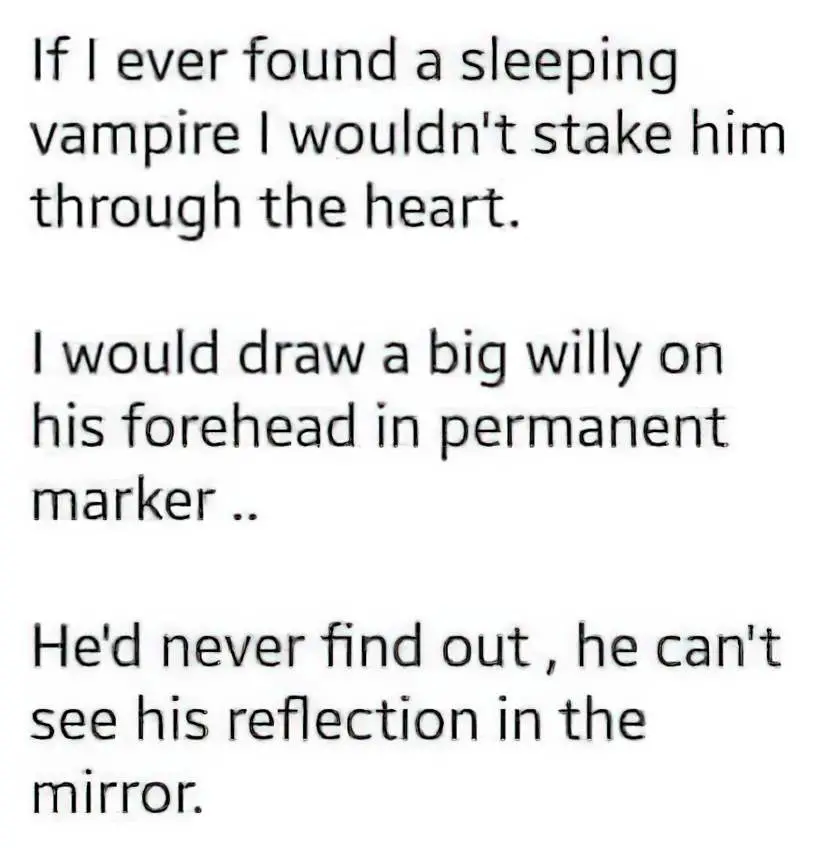
Sire
In common vampire usage, the sire is the the vampire who transforms another person into one of the undead.
Snow White
The comparison between Snow White and vampire lore goes back a long way.
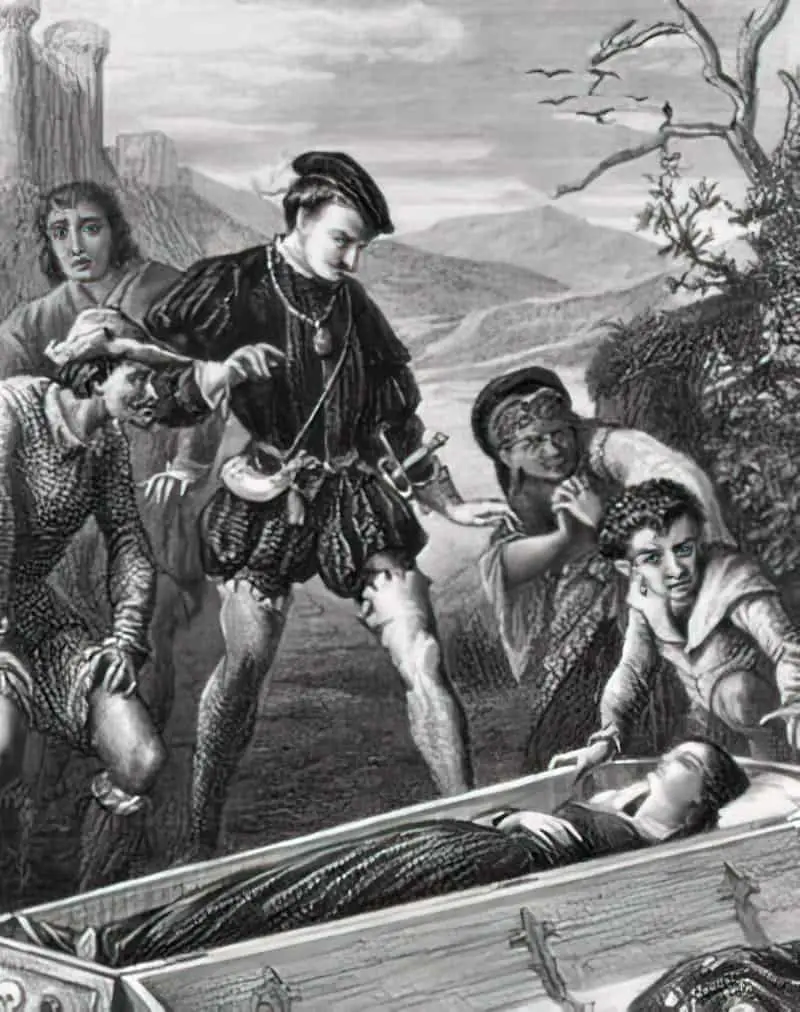
Modern Snow White retellings frequently depict Snow White as a vampire. “How I wish that I had a daughter that had skin as white as snow, lips as red as blood and hair as black as ebony.” Neil Gaiman’s “Snow, Glass, Apples” is one example.


The way deviant women – murderesses, witches, vampires – are perceived and represented reveals much about what a society considers the norm for acceptable female behaviour. Drawing on extensive archival records and published texts, Susanne Kord investigates the stories of eight famous murderesses in Germany as they were told in legal, psychological, philosophical and literary writings. Kord interrogates the role of representation in legal judgment and the way the emancipation of women was perceived to be linked to their crimes. She demonstrates how perceptions of normal and criminal women permeated not only legal thought but also seemingly unrelated cultural spheres – from poetry, philosophy and physiognomy to early psychological profiling. A major work of German cultural history, this highly original book raises thought-provoking questions about eighteenth- and nineteenth-century gender norms in ways that continue to resonate today.
Soul
Vampires are members of the undead so they have no souls. Back in the day, it was thought that mirrors reflected souls. Creatures without souls can’t be reflected in a mirror, which accounts for why vampires can’t see themselves in a mirror.
Submission
Decadent vampire novels are full of effeminate, submissive male heroes who enjoy being the plaything of a cruel, dominant woman.
Sympathetic Vampire
Despite being terribly written, Victorian Penny Dreadful Varney The Vampire, or, Feast of the Blood was the first memorable example of the “sympathetic vampire”: A sympathetic vampire who despises his condition but is still a slave to it.
The audience is asked to pity the poor misunderstood outsider. The story opens with a horrific scene: A vampire violates the body of a young woman. He pins her to the bed with her hair. The attack is erotically depicted.
After the vampire changed from a monster into a sympathetic character in the popular imagination, the audience of vampire literature changed from a largely male one to a female one, because the emphasis is now on caring and nurturing, with all the traditional stereotypes that go along with that.
Anne Rice’s stories the Vampire Chronicles in the 1970s continued another wave of the archetype of the sympathetic vampire. LeStat and Louis are two vampires on a quest to understand themselves, understand the nature of vampireness and find out why they are this way. Why do people fear them? They philosophise, discuss and are presented as character who the reader is meant to understand. Rather than being monstrous, they are simply misunderstood.
The Southern Vampire Mysteries by Charlaine Harris are another popular addition to the corpus.
This continues with Buffy the Vampire Slayer, particularly in the character of Angel, who is the love interest for Buffy, even though he is a vampire. His role is to go away and try and be good. The Edward Cullen character is developing in this way as well.
Heroines of Film and Television: Portrayals in Popular Culture
While there are a number of studies of how women are represented in popular culture, Norma Jones, Maja Bajac-Carter, Bob Batchelor’s collection of essays Heroines of Film and Television: Portrayals in Popular Culture (Rowman and Littlefield, 2014) looks at the heroine. From discussions of traditional characters such as Wonder Woman and Buffy, The Vampire Slayer, to more unusual heroic women in Kill Bill and The Girl With the Dragon Tattoo, these essays show the strength of characters presented as champions. Co-editor Norma Jones reviews how the book was compiled, as well as her own contribution to the collection. These three also edited a companion collection, Heroines of Comic Books and Literature: Portrayals in Popular Culture, that grew out of the project behind the first book.
New Books Network
“Sympathetic” in relation to fictional characters may also simply mean that the audience finds them relatable.
The Count is a children’s version. He speaks in an Eastern European accent and the outward appearance of a vampire but all he wants to do is count.
Morally good vampires are obviously good fodder for middle grade fiction.
However, there’s an ideological issue with violent, sympathetic vampires.
The rhetoric of the blameless rapist is a constant, the attacker is framed sympathetically, the victim is blamed, and the vampire’s crimes are justified by the animalistic aspects of his nature. These narratives incorporate memory revision strategies to generate sympathy for the vampire so that his crimes are forgiven or forgotten, much the same way “sympathetic” rapists do in the courtroom. The recycling of this Victorian trope is both a symptom of modern rape culture and a machine that perpetuates it.
Wendy Fall
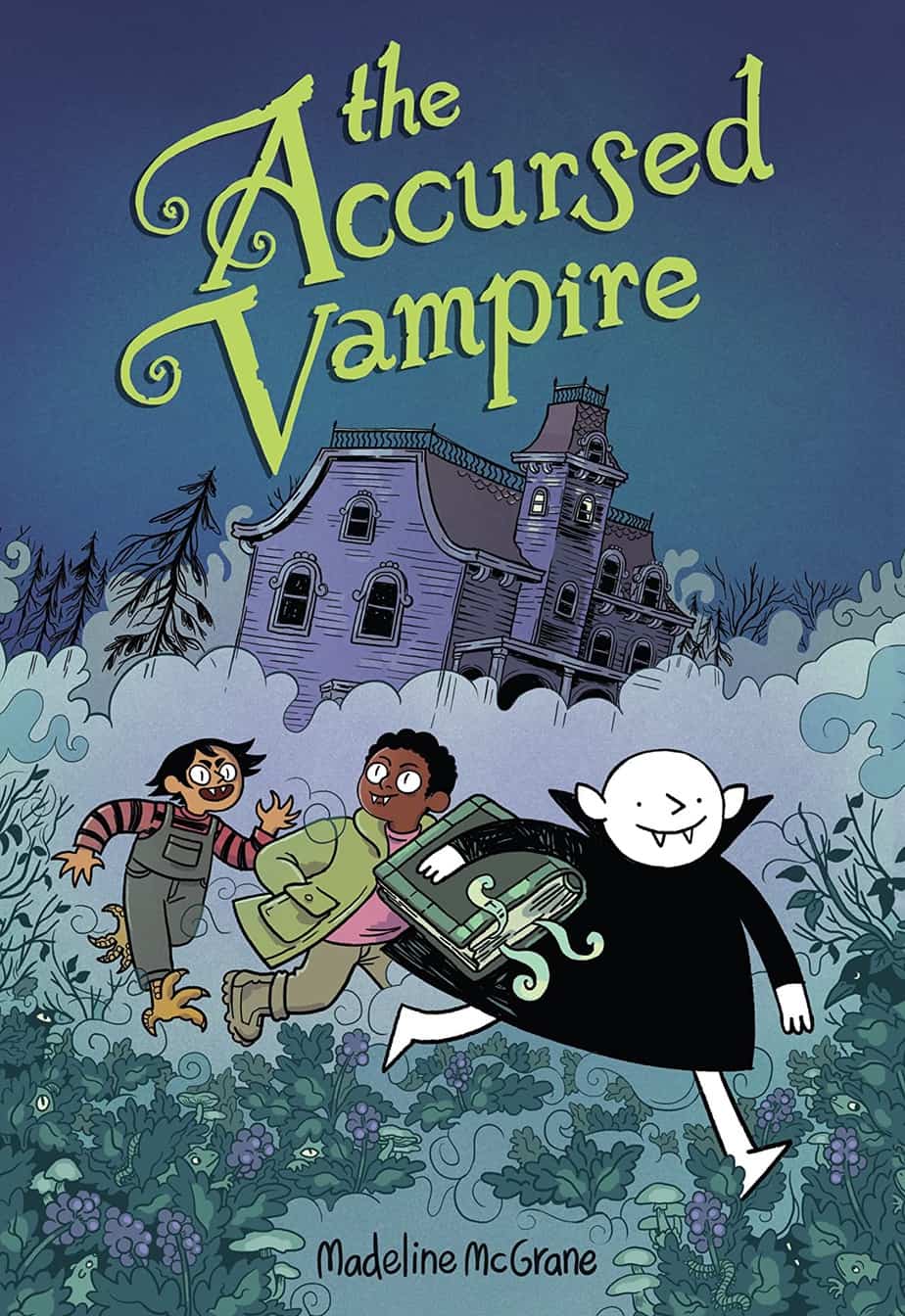
A trio of vampire kids embarks on a quest that takes them to a mysterious small town, where they’ll find an unexpected sense of adventure—and belonging.
Dragoslava is a vampire kid. And that’s not even the worst part. A few centuries ago, Drago was cursed by a witch, and now they must complete every task the witch gives them, or they will be turned into worms.
When the witch tells Drago to bring her a spellbook from Baneberry Falls, they set off with their immortal friends, Eztli and Quintus. But mysteries await in this sleepy midwestern town. Are the keepers of the spellbook, Sara, a vampire, and Ayesha, a witch, as friendly as they seem? Or do they have a hidden agenda, like everyone else Drago has ever known?
Madeline McGrane tells a charming and compelling story about the worst vampires who finally have the chance to do something good.

The kids in the third grade at Bailey Elementary are so hard to handle that all of their teachers have quit. But their new teacher, Mrs. Jeepers, is different to say the least. She’s just moved from the Transylvanian Alps and she seems to have some strange powers that help her deal with these mischief-makers. Her methods may be a little unconventional, but, then again, Mrs. Jeepers may be just what the Bailey School kids need.
Terrorism
Vampires are a proxy for our fear of terrorists. They look like us, walk among us, we can be turned into one but they have alien desires which involve our deaths. Showing them as capable of love means they can be rehabilitated into the community. There’s an old theory that vampires become more popular in America when Democrats are in power because conservatives see Democrats as effeminate elites who suck the life out of the working class. (According to the same theory, zombies are popular when conservatives are in power, because Democrats see conservatives as mindless drones.)
Tobusexual
Tobusexual is an ace-spec identity for when a person is sexually attracted exclusively to characters that have similarities to/are a monster, or monster related person. This could be a fictosexuality, but is not exclusive to it.
LGBTQA Wiki
Bear in mind the word tobusexual is one of those micro labels which isn’t used widely in practice, but exists because it is helpful for some people in understanding their own way of being in the world.
Tolerance
Children’s authors are more likely to use vampires in stories to promote tolerance towards people from other cultures, or anyone different from the norm.
Topographical vampire
When the setting behaves like a human-shaped vampire, sucking the life out of the human characters in some way e.g. the “Forbidden Corner” in “The Transfer” (1912) or the nature spirit of a snow-clad mountain/river/forest e.g. “A Descent Into Egypt” (1914), both by Algernon Blackwood.
Transubstantiation
Transubstantiation is a Christian concept. Eucharistic elements become the body and blood of Christ while keeping only the appearances of bread and wine. Vampire lore uses this symbolism.
Transgression
Vampire stories are transgressive. They are about testing and pushing boundaries, or working out where the boundaries of society lie.
Transylvania
Transylvania is the administrative province of the former Austro-Hungarian Empire. It is the historical province of Romania. Back in 1830, long before Bram Stoker’s Dracula was published, “Transylvania” appeared on a British map, referring to what we now call Tanzania.
Vampires became associated with Transylvania because of Count Dracula. Vlad the Impaler (Stoker’s inspiration) was born in Sighisoara, a Transylvanian town. Today the region makes use of this association in its tourism. Visitors can visit Bran Castle, which is kind of ‘Dracular-y’ but doesn’t have any direct connection to the book.
Transylvanism
Transylvania is a cultural construct. The place is still considered by many people to be a fictitious place, real only in storytelling, a mythical Old World, similar to the separate realm of fairytale.
In fiction, ‘Transylvania’ has the following features:
- Forested mountains, barely accessible to humans
- Scared and superstitious country people
- Night-time happenings
- Stormy, wet weather and atmosphere
- Castles built on the edge of cliffs
- Generic Balkan music
- German and Hungarian names and phrases
- Characters with generic Central European pronunciation of words
Consider ‘Transylvanism’ as you consider ‘Orientalism’. Transylvanism is a concept of Transylvania which is pretty far removed from how it actually was. Most vampire stories identify Transylvania with Count Dracula. In this view, Transylvania is: wild, backward, at the edge of civilisation (like the symbolic forest). This is useful setting for storytellers, who are able to deploy many Gothic tropes effectively. The problem with Transylvanism is that it also very effectively promotes and maintains hegemonic Western views, about how the West is more advanced and worthy than everywhere else. Transylvanism Others the East, especially the Balkan East.
Transylvanism and Orientalism have this in common: ideological myths survive even though everyone has access to far more knowledge about these real geographical areas.
True Blood
True Blood is a popular TV series which ran on HBO from 2008 to 2014. Led by Alan Ball, the series is an adaptation of The Southern Vampire Mysteries series of novels by Charlaine Harris. Alan Ball believes True Blood paved the way for subsequent speculative TV shows, specifically Game of Thrones and Westworld.
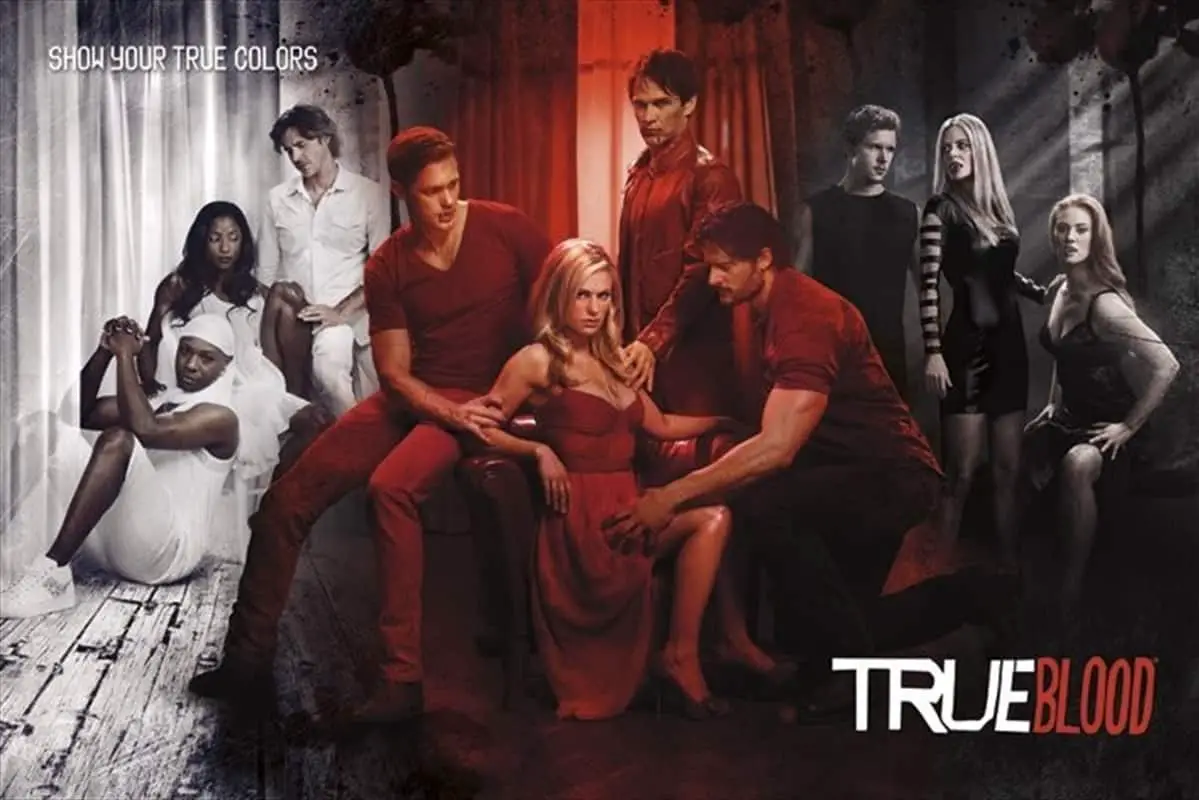
Twilight
Twilight (2005) is a young adult series of novels by Stephenie Meyer, later adapted for film. This series was the beginning of a new resurgence in vampire enthusiasts in the early 2000s. Commentators draw parallels between Twilight and Pride and Prejudice. Unlike many vampire stories, the vampires of this series have been de-queered and de-sexed. (The sexuality is mostly the Erotics of Abstinence. It is a resolutely heterosexual universe.)
The vampires in this series try to be ethical. They only suck the blood of wild animals, not humans.
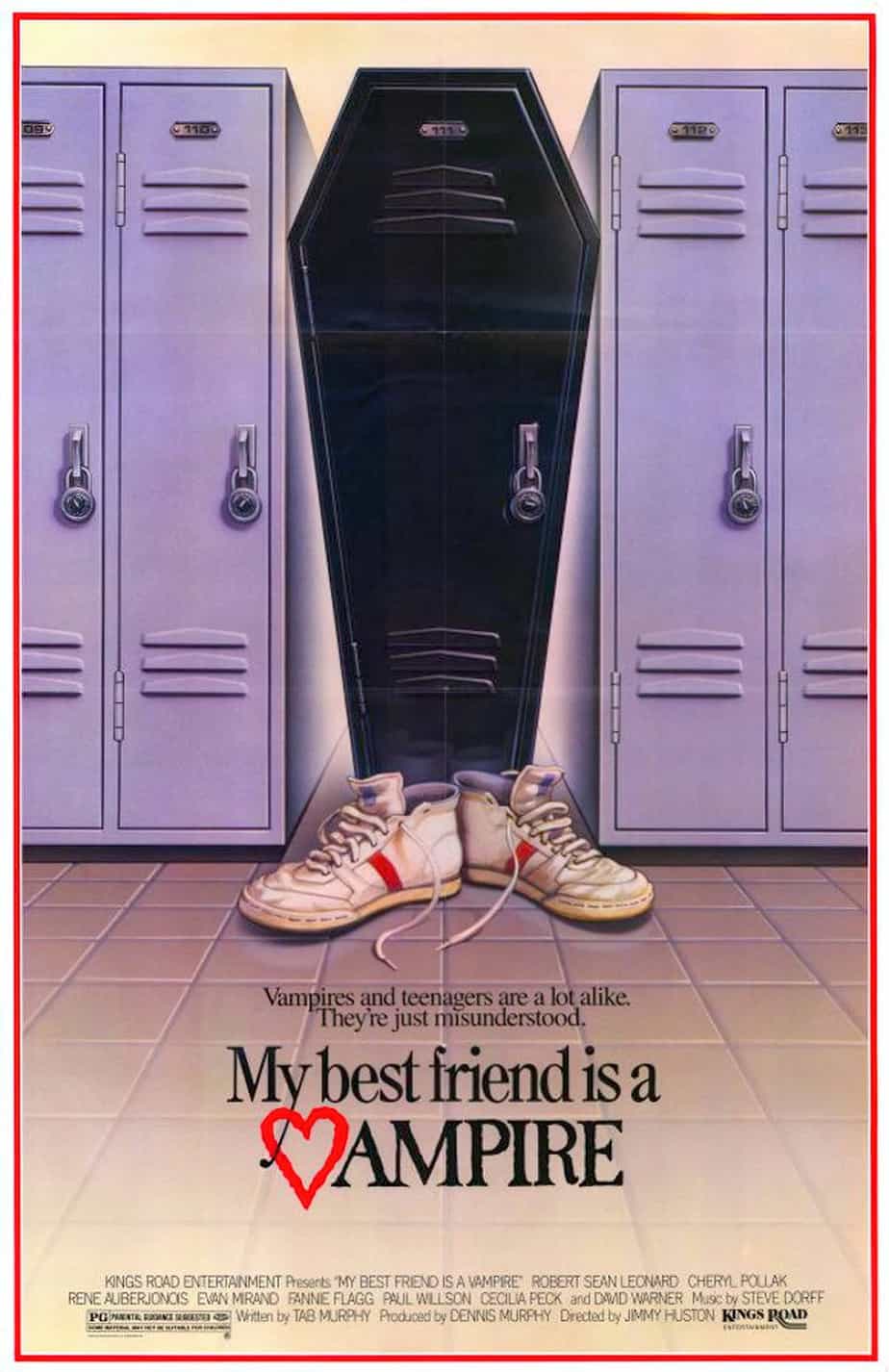
Vampire
The word ‘vampire’ has French, Hungarian and Turkish origins, perhaps starting with Turkish ‘uber’, meaning ‘witch’. These days we associate the look and feel of a vampire with Count Dracula. Bram Stoker cemented the vampire’s details with his super popular book. But in earlier times, ‘vampire’ meant pretty much any form of non-ethereal (corporeal) undead. For instance, Balkan werewolves were considered a subcategory of vampire.
Vampire anime
Japanese vampire animation as developed a large fan base among English speaking audiences. e.g. Vampire Hunter D (1985).
Vampire poetry
The first vampire literature was poetry e.g. A Vampyre of the Fens (beginning of the 1000s) then Le Morte D’Arthur in the 1400s. (A lot of literature got lost in between)
Vampire romance
A subgenre of romance which is about intimacy rather than a disconnection between human and nonhuman. Obsession by Lori Herter in 1991 was the first vampire novel marketed as a romance. Previous vampire stories were shelved with horror or fantasy.
VAMPIRE STAR
A vampire star exists in a two-star system. One star sucks material from the other and after sucking it all up, starts spinning more rapidly.
Earth’s closest ‘black hole’ may actually be a vampire star.
Varney the Vampire
Varney the Vampire; or, the Feast of Blood is a Victorian era (1845–1847) serialized gothic horror story attributed to James Malcolm Rymer and Thomas Peckett Prest. For these “penny dreadfuls”, authors were paid by the word, so this is in serious need of editing down, at least by modern standards. Despite this story being objectively terrible, it still had an influence on subsequent vampire lore, including Dracula. Varney is the first example of the so-called sympathetic vampire, for instance.
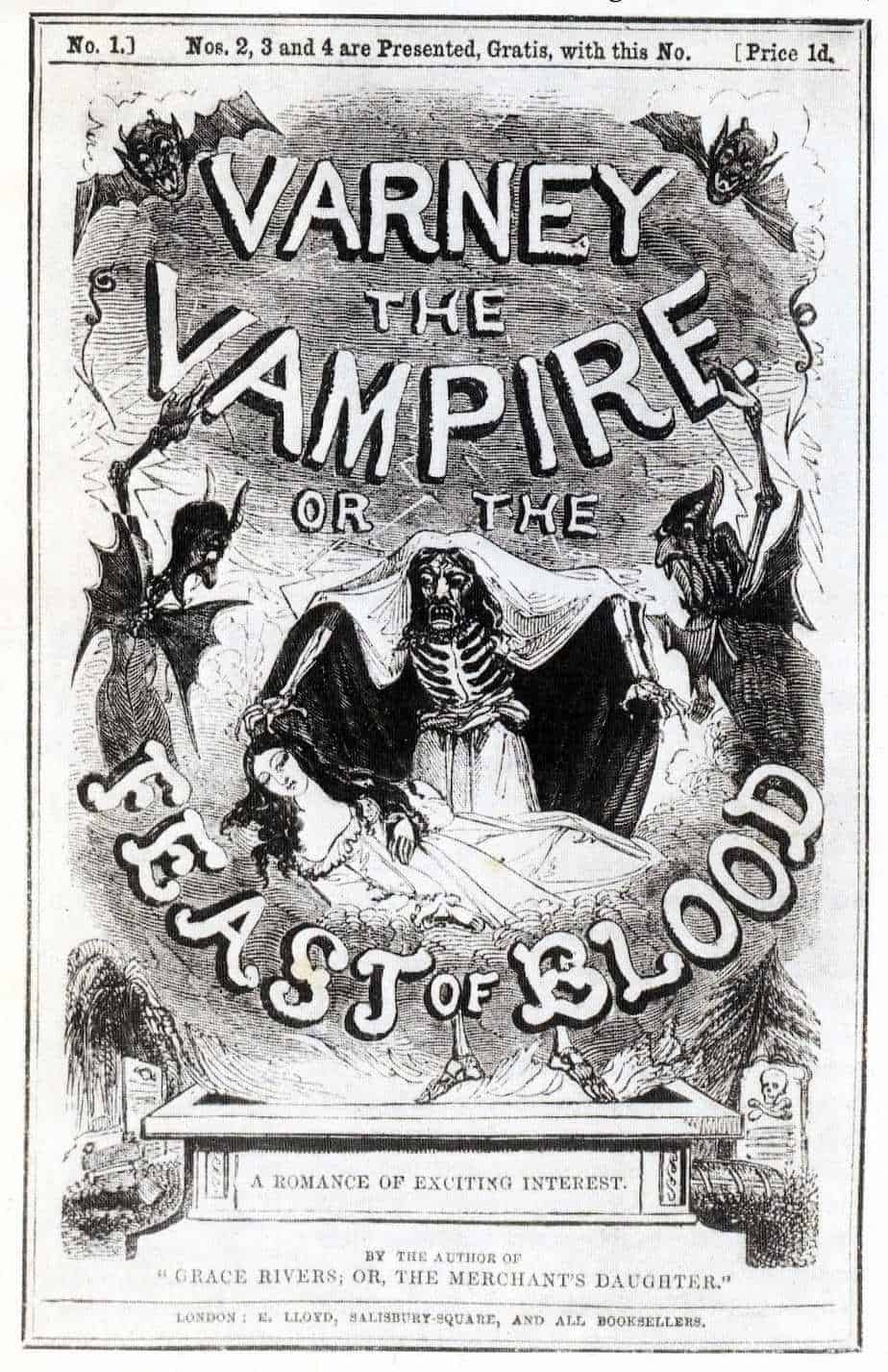
Vitality
If you go to the doctor today she’s unlikely to ask you about your vitality, though medicine does talk about ‘vital statistics’ and so on. ‘Vitality’ once meant ‘life spirit’, ‘energy’, ‘general health levels’. Vitality is the mysterious life force that separated the living from the dead. Vitality could be sucked out of you by a supernatural creature. A malevolent elemental might become palpable after absorbing an invalid’s ‘vitality’ e.g. “The Story of the Moor Road“. The Light of the Eye (1897) by H. Chaytor is about a man whose eyes have the power to suck out other people’s vitality, so the magic isn’t necessarily blood related..
Vlad the Impaler
Bats became linked to a real person in history: Vlad the Impaler. (1431-1476) He lived in Bulgaria and was a member of the House of Drăculești. In Bulgaria he is seen as a war hero. He is reputed to have killed tens of thousands of people.
Cinema vampires tend towards good-looking these days but ‘good-looking’ wasn’t always the aim. Here is Stoker’s original description of Count Dracula, which is based on the story of Vlad the Impaler: ‘His face was a strong—a very strong—aquiline, with high bridge of the thin nose and peculiarly arched nostrils; with lofty domed forehead, and hair growing scantily round the temples but profusely elsewhere. His eyebrows were very massive, almost meeting over the nose, and with bushy hair that seemed to curl in its own profusion. The mouth, so far as I could see it under the heavy moustache, was fixed and rather cruel-looking, with peculiarly sharp white teeth; these protruded over the lips, whose remarkable ruddiness showed astonishing vitality in a man of his years. For the rest, his ears were pale, and at the tops extremely pointed; the chin was broad and strong, and the cheeks firm though thin. The general effect was one of extraordinary pallor.’
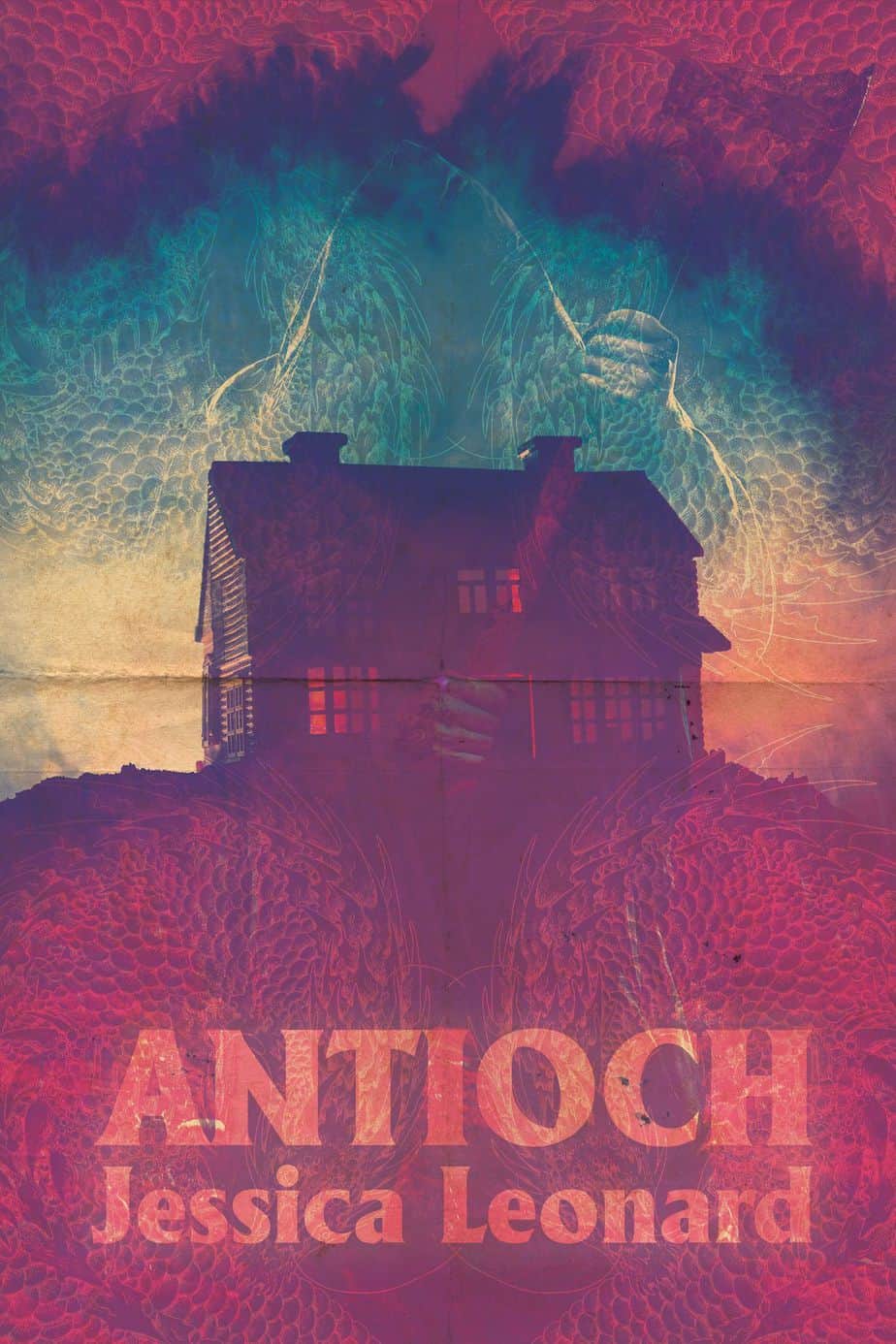
Antioch used to be a quiet small town where nothing bad ever happened. Now six women have been savagely murdered. The media dubs the killer ‘Vlad the Impaler’ due to the gruesome crime scenes of his victims. Clues are drying up fast and the hunt for the monster responsible is hitting a dead end.
After picking up a late-night transmission on her short-wave radio, a local bookseller named Bess becomes convinced a seventh victim has already been abducted. Bess is used to spending her nights alone reading about Amelia Earhart conspiracy theories, and now a new mystery has fallen in her lap: one she might actually be able to solve.
Assuming she doesn’t also wind up abducted.
Antioch, a cross between Session 9 and Disappearance at Devil’s Rock, is an eerie mind-bending debut horror novel guaranteed to leave you drowning in paranoia.
Vrykolakas
This is the undead vampire equivalent from Greek mythology. Drinking blood isn’t one of its main features. They don’t decay after death. If you ate the meat of a werewolf you might become a vampire. (Vrykolakas is in fact the Slavic word for werewolf, showing the Slavic influence in Byzantium.) You wouldn’t have wanted to have red hair and grey eyes at this point in history either, because people would’ve assumed you were a vrykolakas. (In the West, red hair was more associated with witches.)
By the way, in this culture it was thought that all werewolves would become vampires after death.
Weird Tales: The unique magazine
Weird Tales was an American pulp magazine with higher than usual production values. The publication lasted 30 years from 1923. It was hugely influential and pioneered the development of the weird-fantasy story as a specialised form of popular fiction. It was the first all-fantasy magazine in the world. Vampires were a popular theme. The author most closely associated with Weird Tales was H. P. Lovecraft.
WHARRAM PERCY
A deserted medieval village in North Yorkshire, England, where the bones of over a hundred ‘vampire’ corpses were buried deep in village pits.
If you’re looking for it, you’ll find it on the western edge of the chalk Wolds of North Yorkshire, about 1 mile south of Wharram-le-Street. It’s is signposted from the Beverley to Malton road.
The bones of these vampires were excavated more than fifty years ago and date back to the 1300s.
They were at first thought to be the result of cannibalism during a famine or a massacre in the village but on further inspection in 2017 the burned and broken skeletons were linked instead to deliberate mutilations perpetrated to prevent the dead returning to harm the living – beliefs common in folklore at the time.
Older than Dracula: in search of the English vampire by Sam George
Whitby
Whitby is a seaside town, port and civil parish in the Scarborough borough of North Yorkshire, England. Its attraction as a tourist destination is enhanced by the proximity of the high ground of the North York Moors national park and the heritage coastline and by association with the horror novel Dracula.

New Orleans Fang Fest, 1995.
Mina’s having a summer to die for.
17-year-old Mina, from England, arrives in New Orleans to visit her estranged sister, Libby. After growing up in Whitby, the town that inspired Dracula, Mina loves nothing more than a creepy horror movie. She can’t wait to explore the city’s darkest secrets – vampire tours, seedy bars, spooky cemeteries, disturbing local myths…
And it gets even better when Mina lands a part-time job at a horror movie mansion and meets Jared, Libby’s gorgeous housemate, co-worker and fellow horror enthusiast.
But the perfect summer bliss is broken when, while exploring the mansion, Mina stumbles upon the body of a girl with puncture marks on her neck, clutching a lock of hair that suspiciously resembles Libby’s… Someone is replicating New Orleans’ most brutal supernatural killings. Mina must discover the truth and prove her sister’s innocence before she becomes the victim of another myth.
FOR FURTHER INVESTIGATION
In the second part of this two-part examination of vampire from lore from around the world, Folklore Podcast creator and host Mark Norman moves on to discuss ways of ensuring that the recently deceased do not rise again as vampires and, if these measures fail, what differing methods are available to destroy a creature. What are the differences between pinning and staking? Which wood should you use for your stake? Why were some bodies buried with farm implements?
How the vampire became film’s most feminist monster
Twilight is not good for maidens: gendered sexuality in the familyTwilight by Anita Silver at Studies In The Novel
Mercer, J.A., Pastoral Psychology Vampires Desire Girls and God.
Anne Klaus and Stefanie Krüger’s Vampires Without Fangs
An excellent book is Bitten By Twilight: Youth culture media and the vampire franchise, a series of articles by different people.
Nayar, P., How to Domesticate a Vampire, from the journal Nebula, an Australian teaching journal., available freely online.
Different Adaptations: The Power of the Vampire
The Romanticization Of Hollywood Vampires from Nosferatu to The Twilight Saga
Emory University has a list of short videos about movies and pop culture on YouTube. Twilight Taboos: Breaking The Rules Of The Traditional Vampire is ultimately positive about the Twilight Series, and views this new reimagining of the monster as a ‘literary’ vampire in which anything is possible. The literary vampire is different from the ‘folkloric’ vampire, which is a monster, and the subtext is that we shouldn’t criticise Myer’s ‘sparkly vampires’ because we’re expecting creatures of the folkloric tradition.
The 10 Best Vampire Novels No one Has Read from Barnes & Nobel
Revamped – How the Twenty-First Century Vampire Is Redefining Masculinity from Interesting Literature
10 of the Grossest and Most Grotesque Vampires from Folklore from io9
Vampire Movies — how many off this list have you seen? (Me: 2.5)
A list of books about vampires from Miami University database
The New England Vampire Panic was more recent than you might think, as explained by Stuff You Missed In History podcast.
Genetic mutation may explain the origin of ‘vampires’ talks about a blood disorder called erythropoietic protoporphyria (EPP).
Header painting: Jules Adler – Transfusion of Goat Blood 1892

